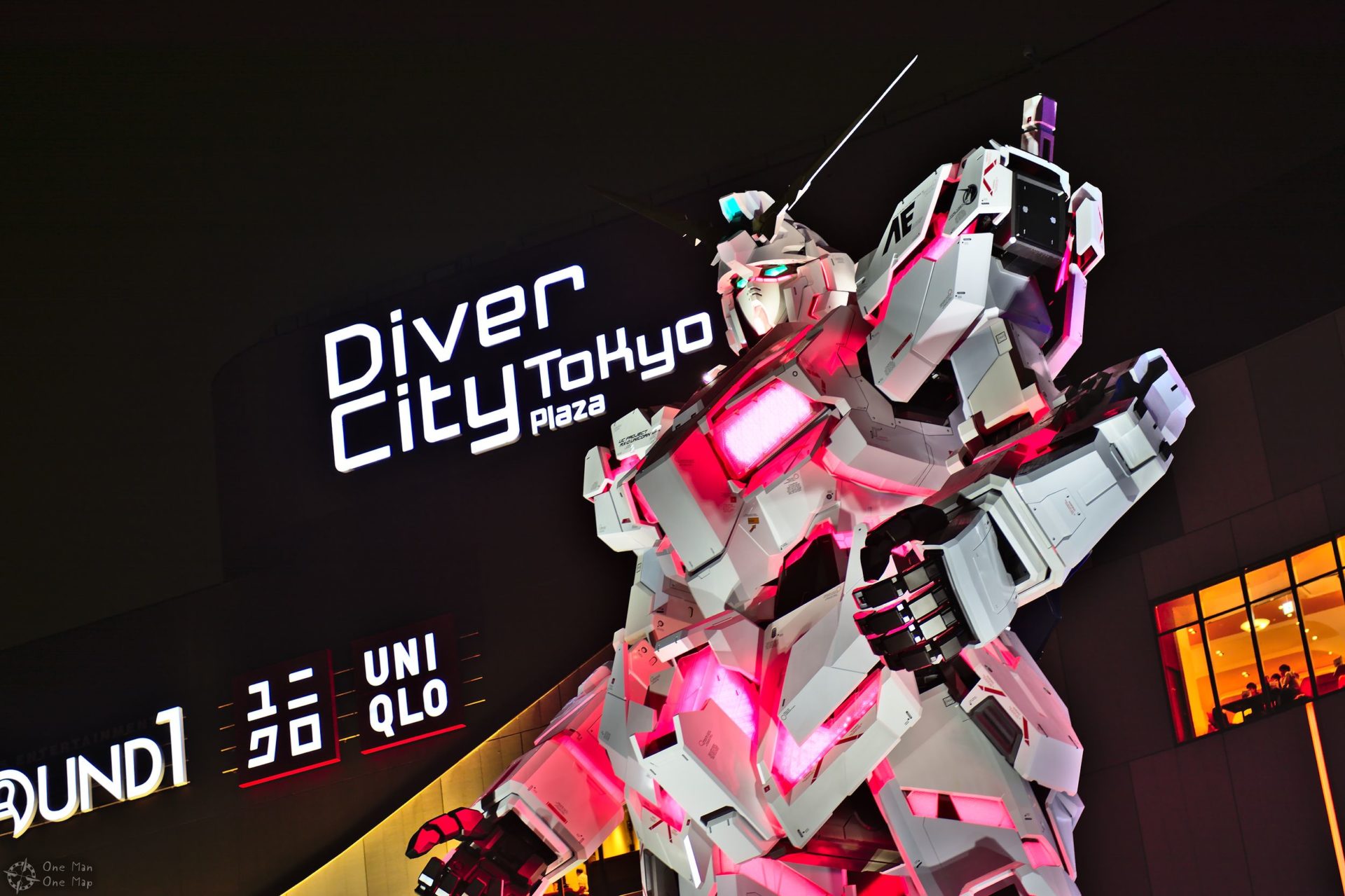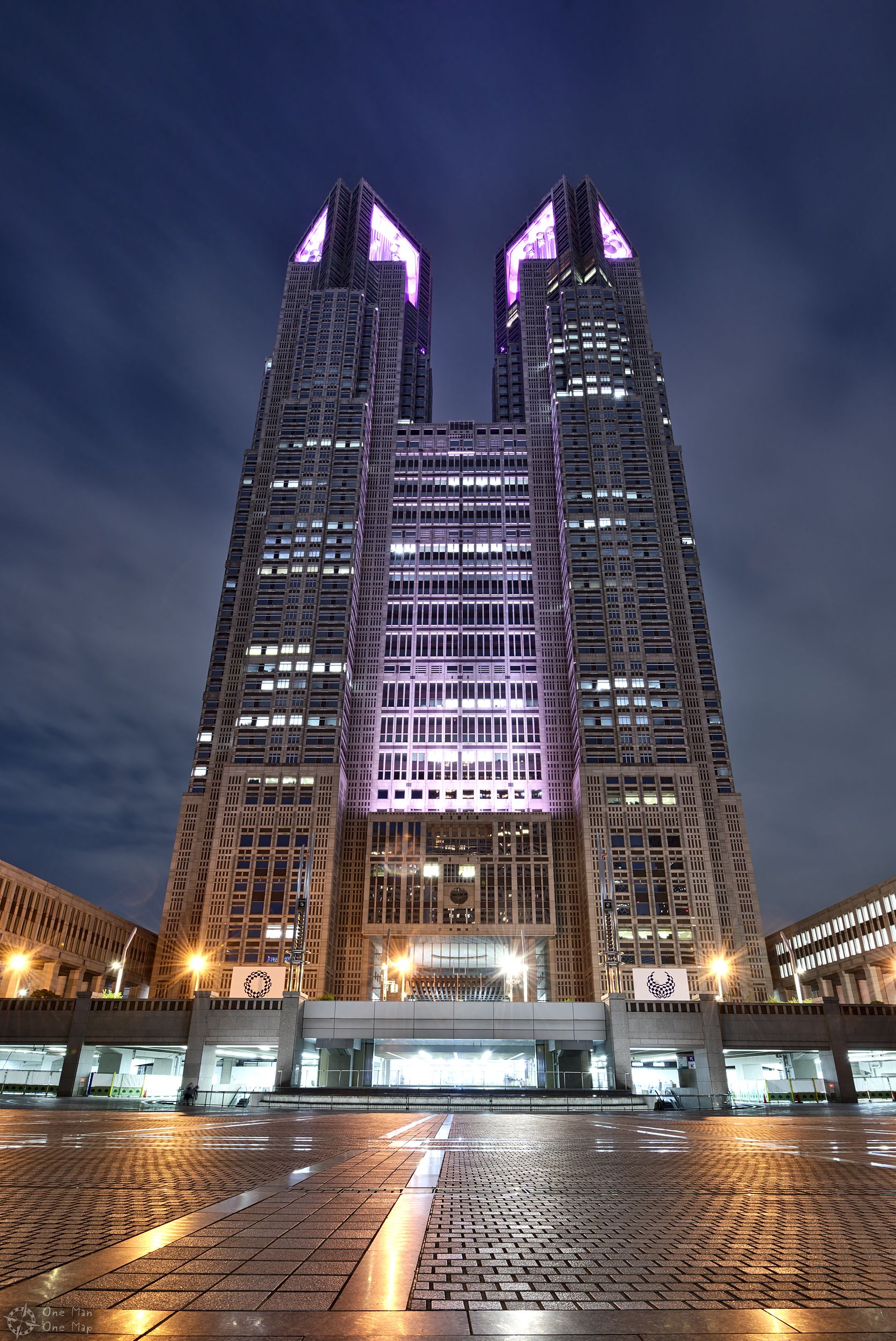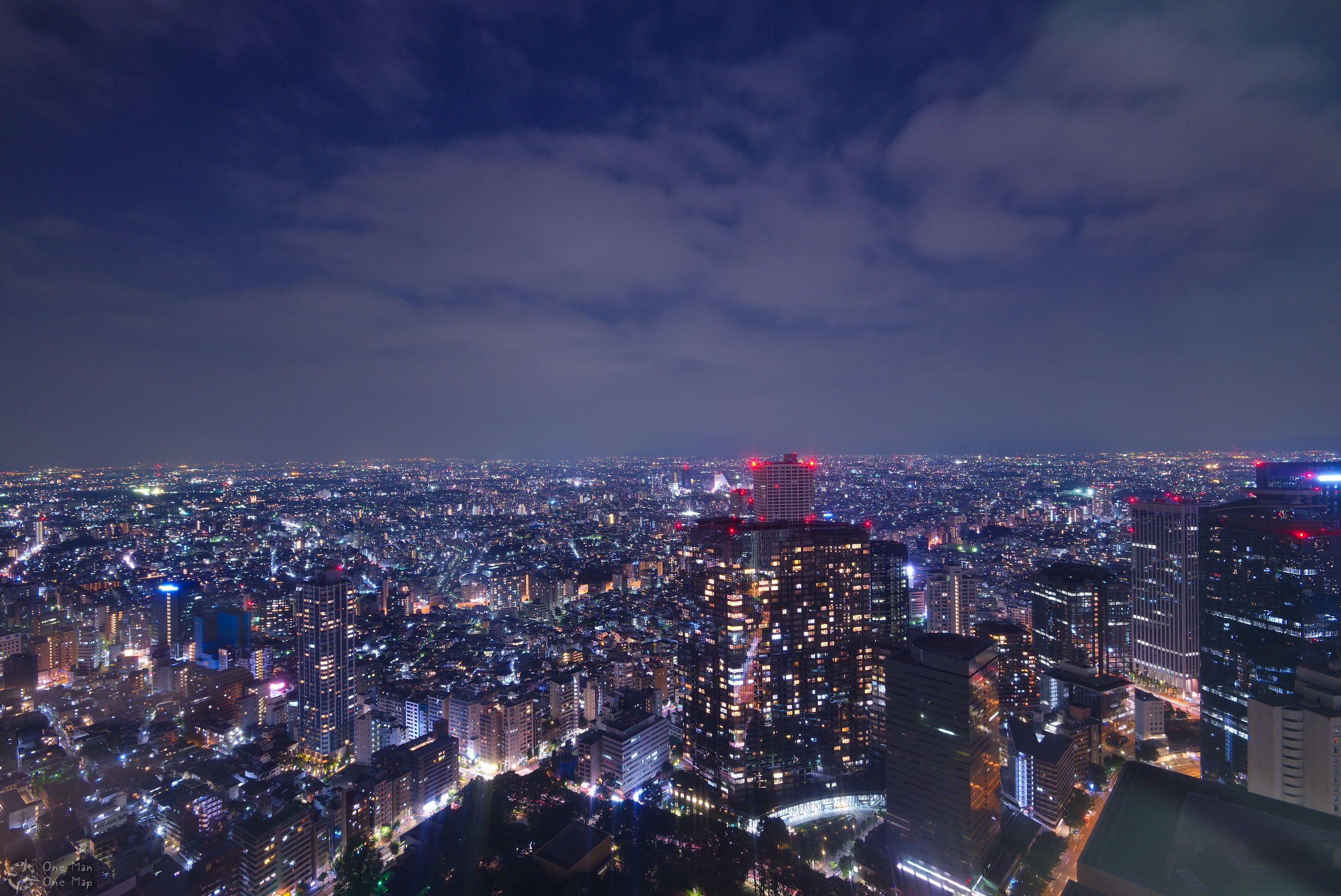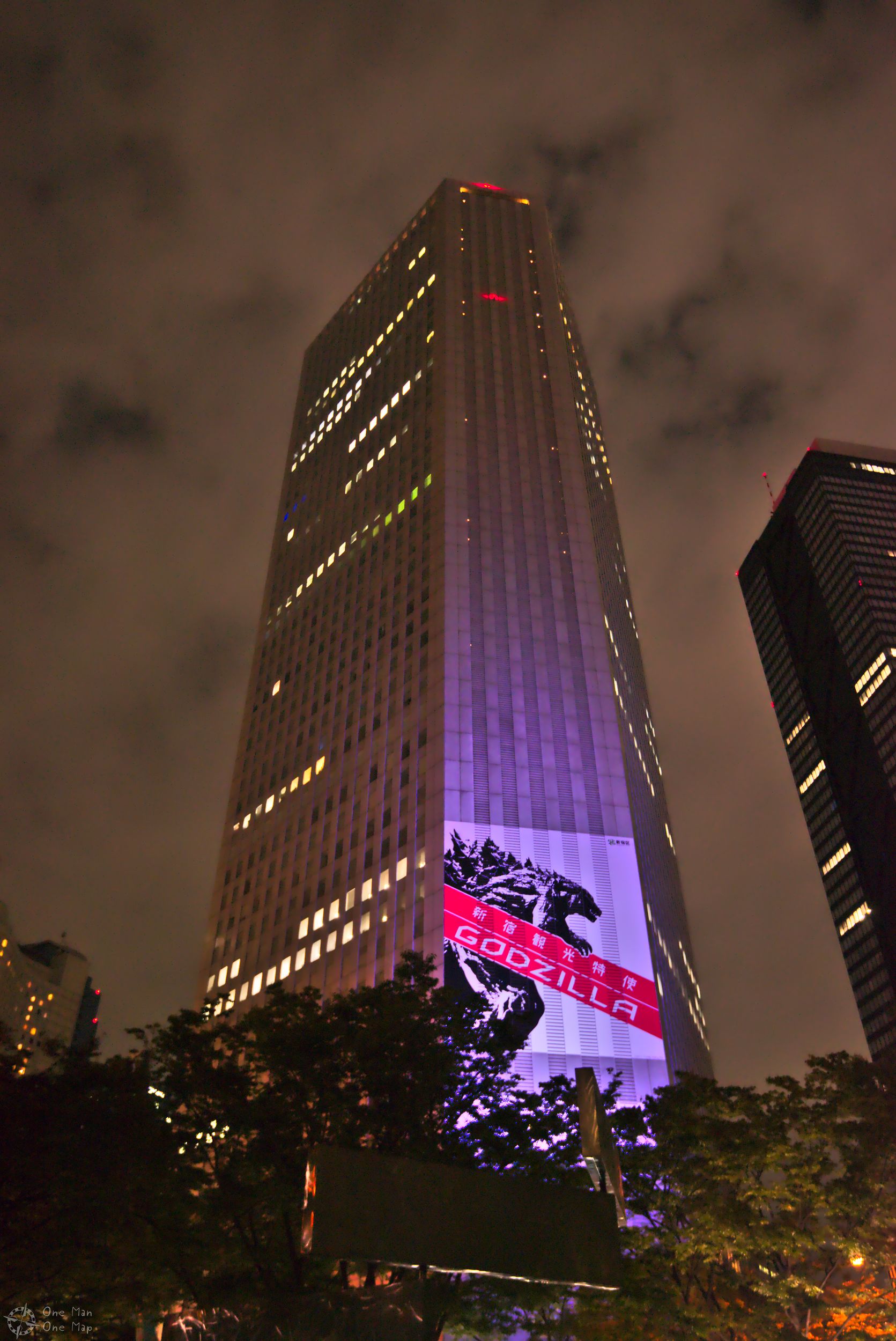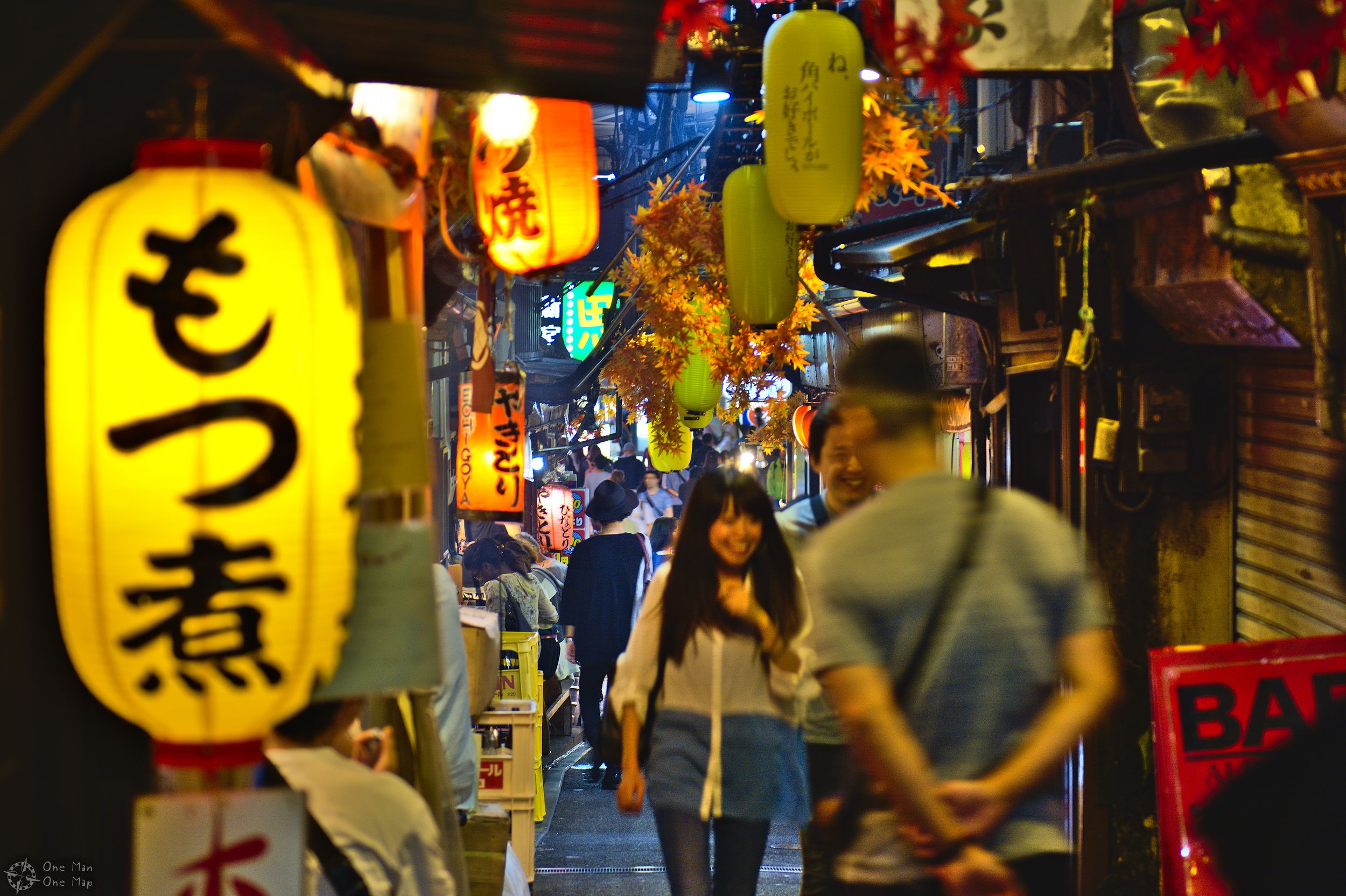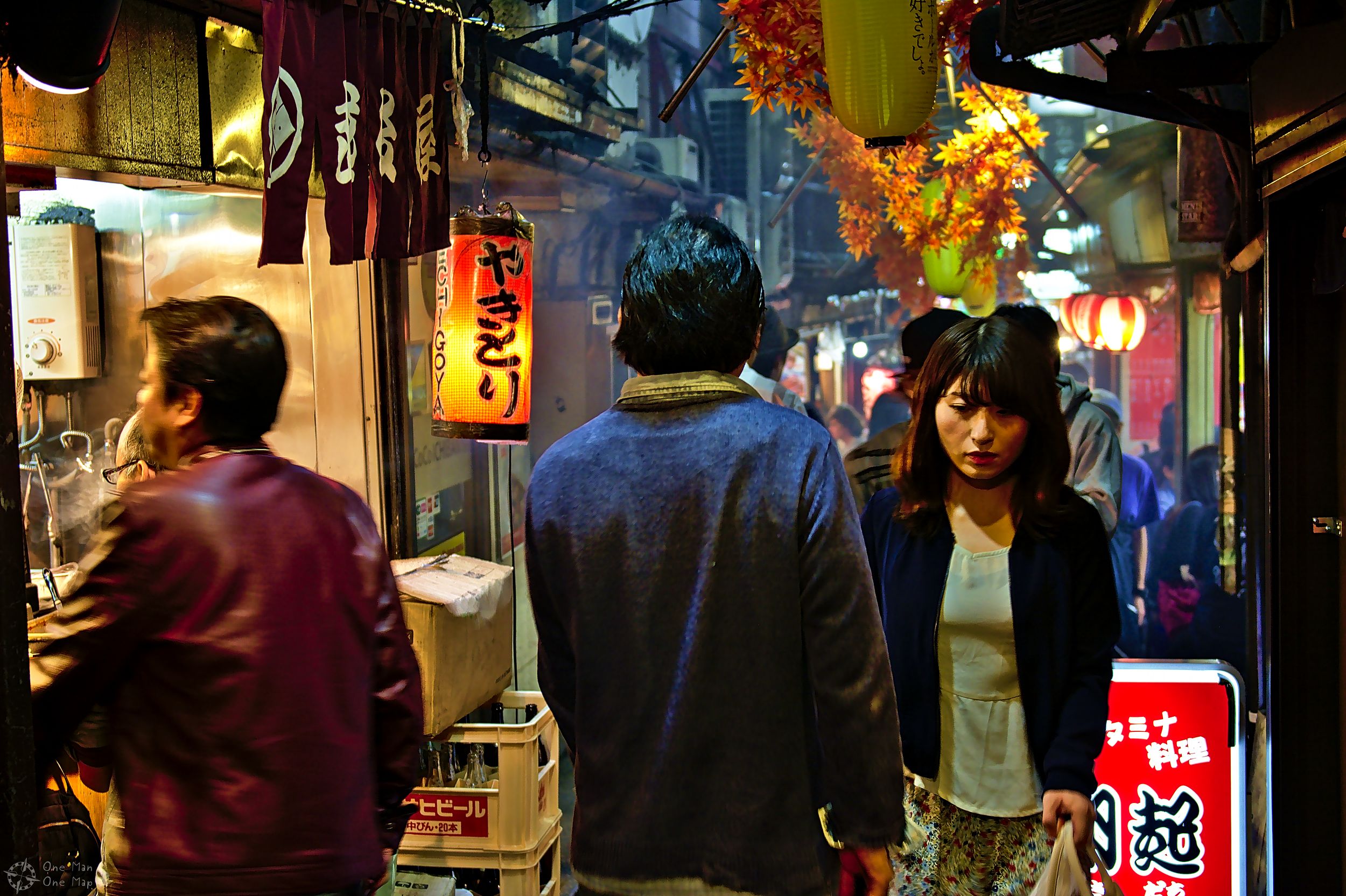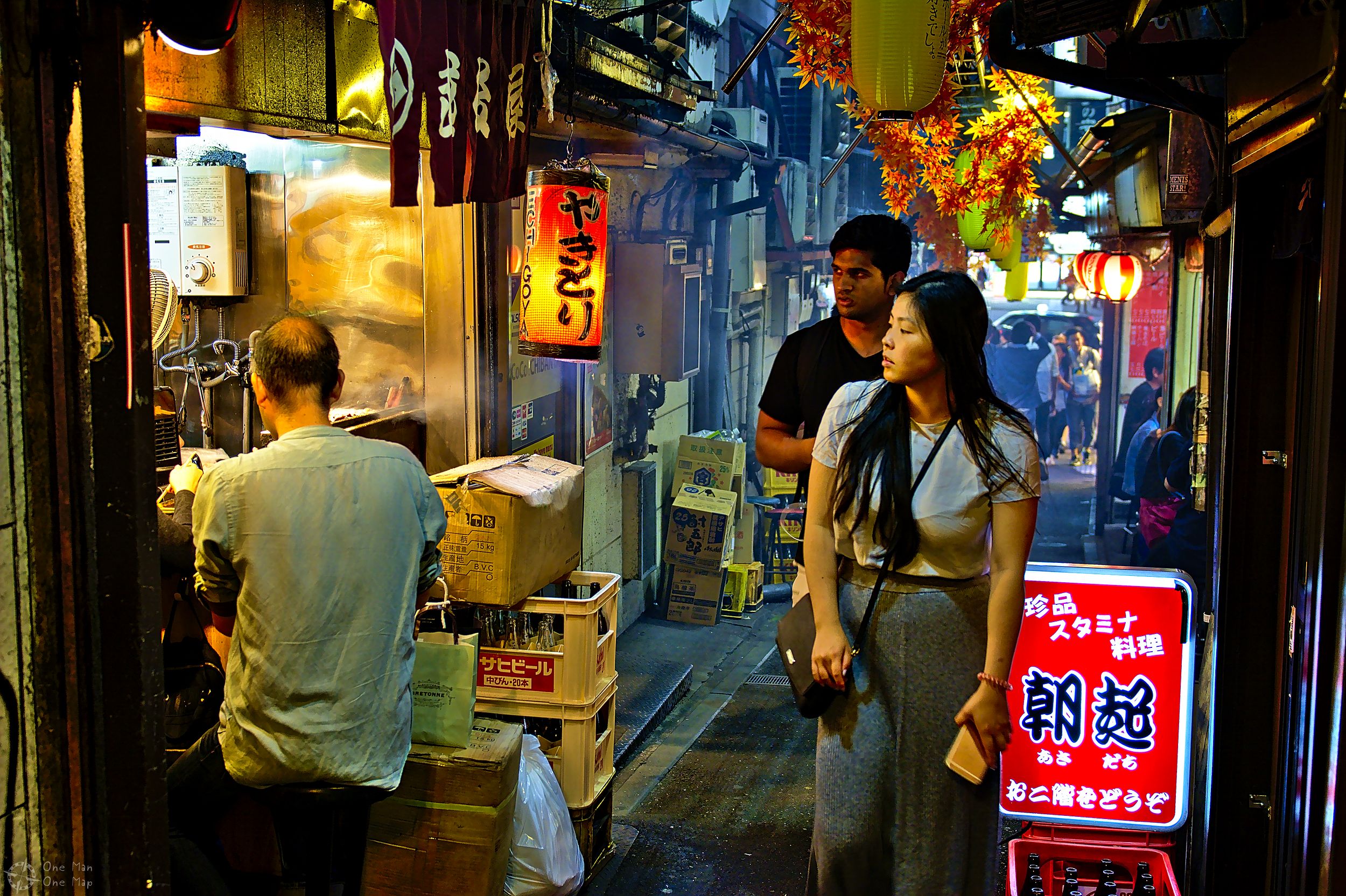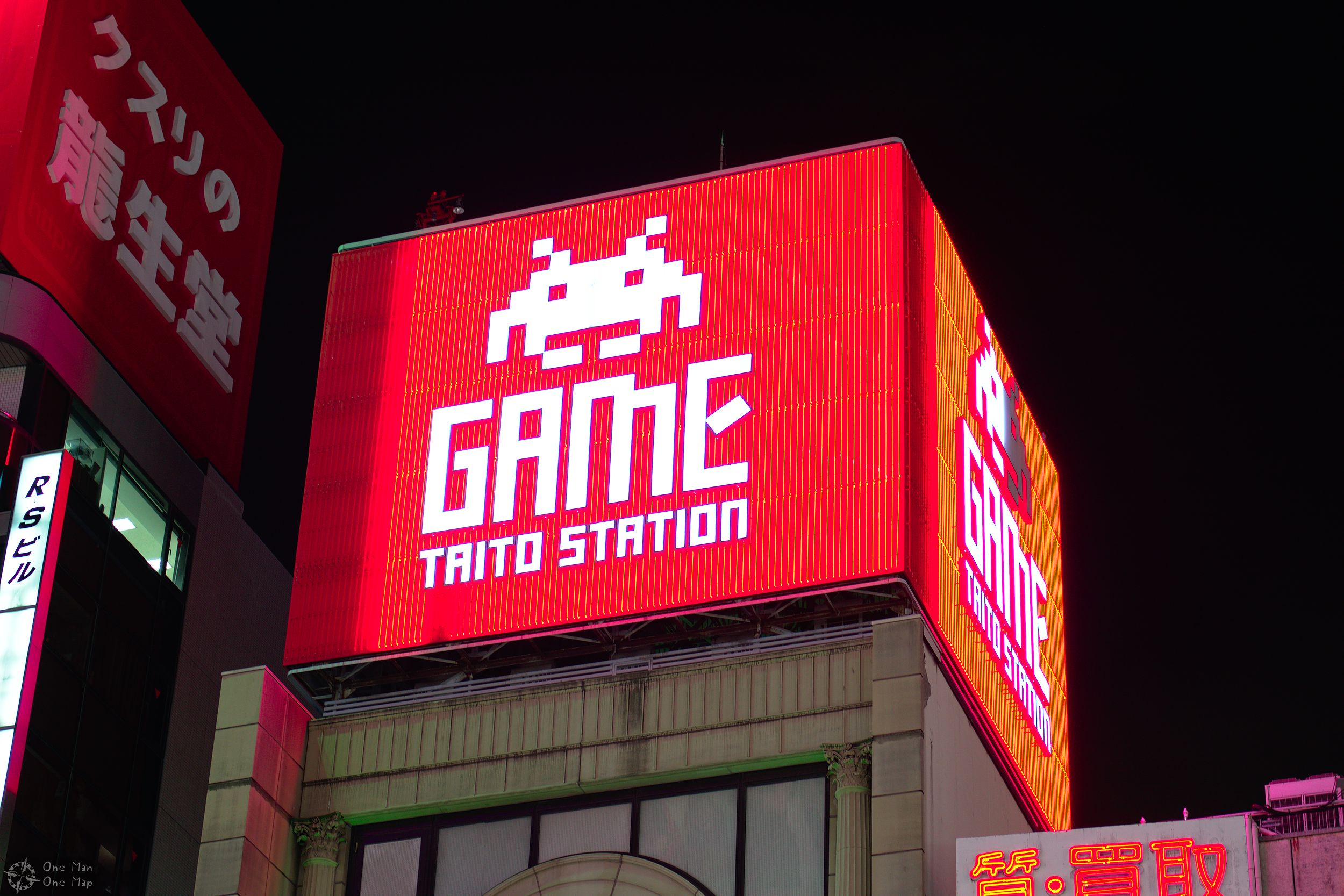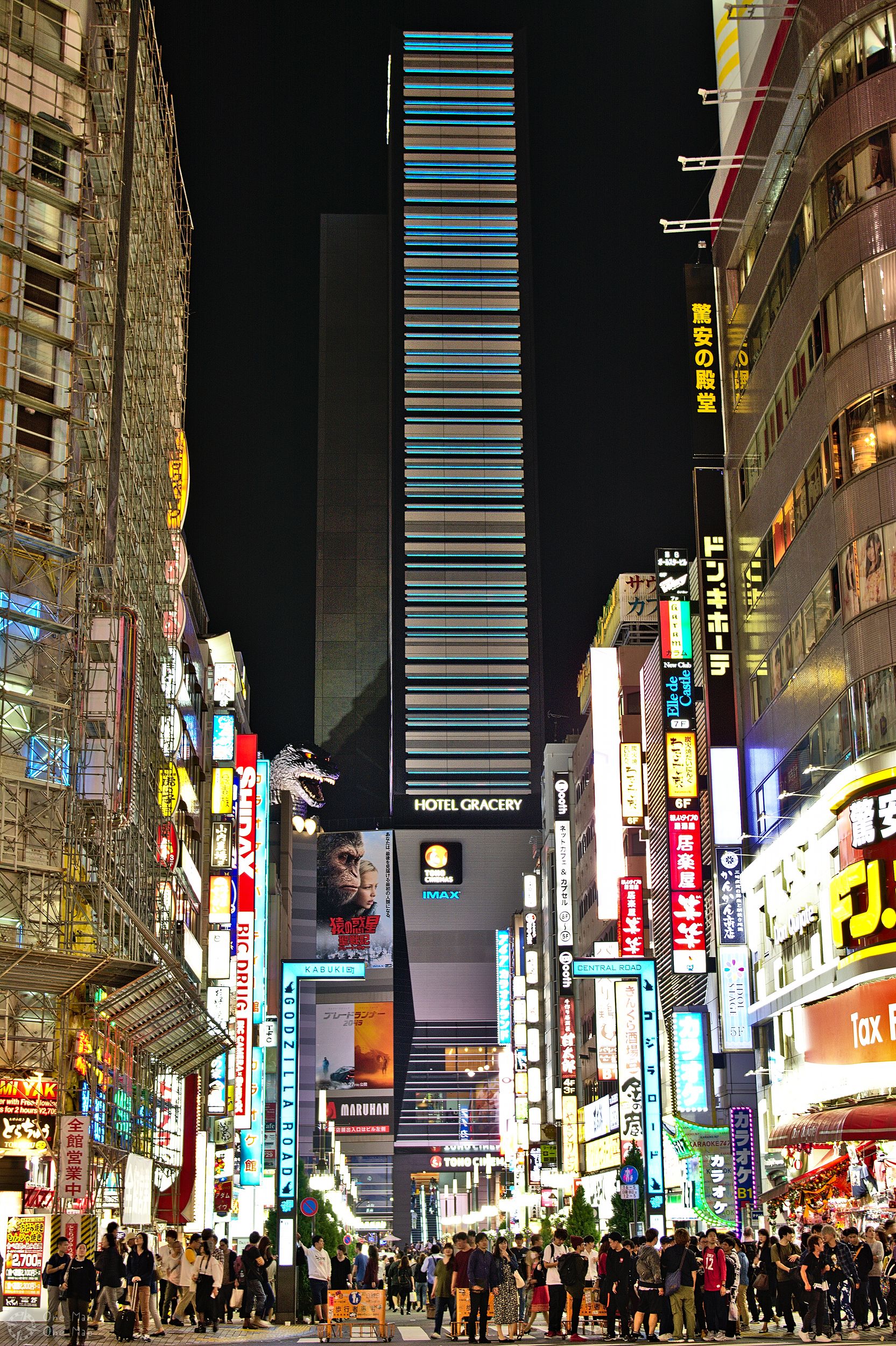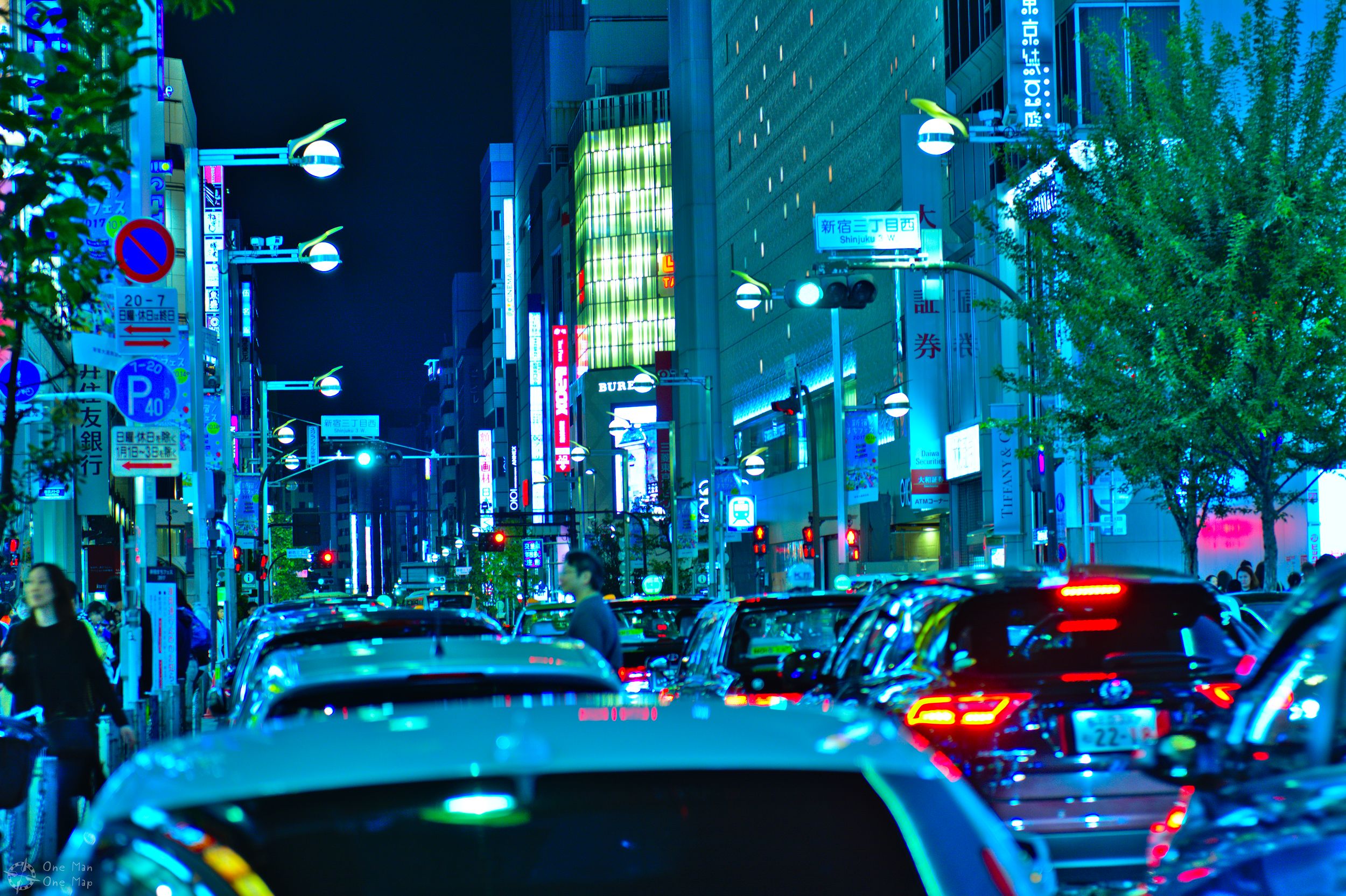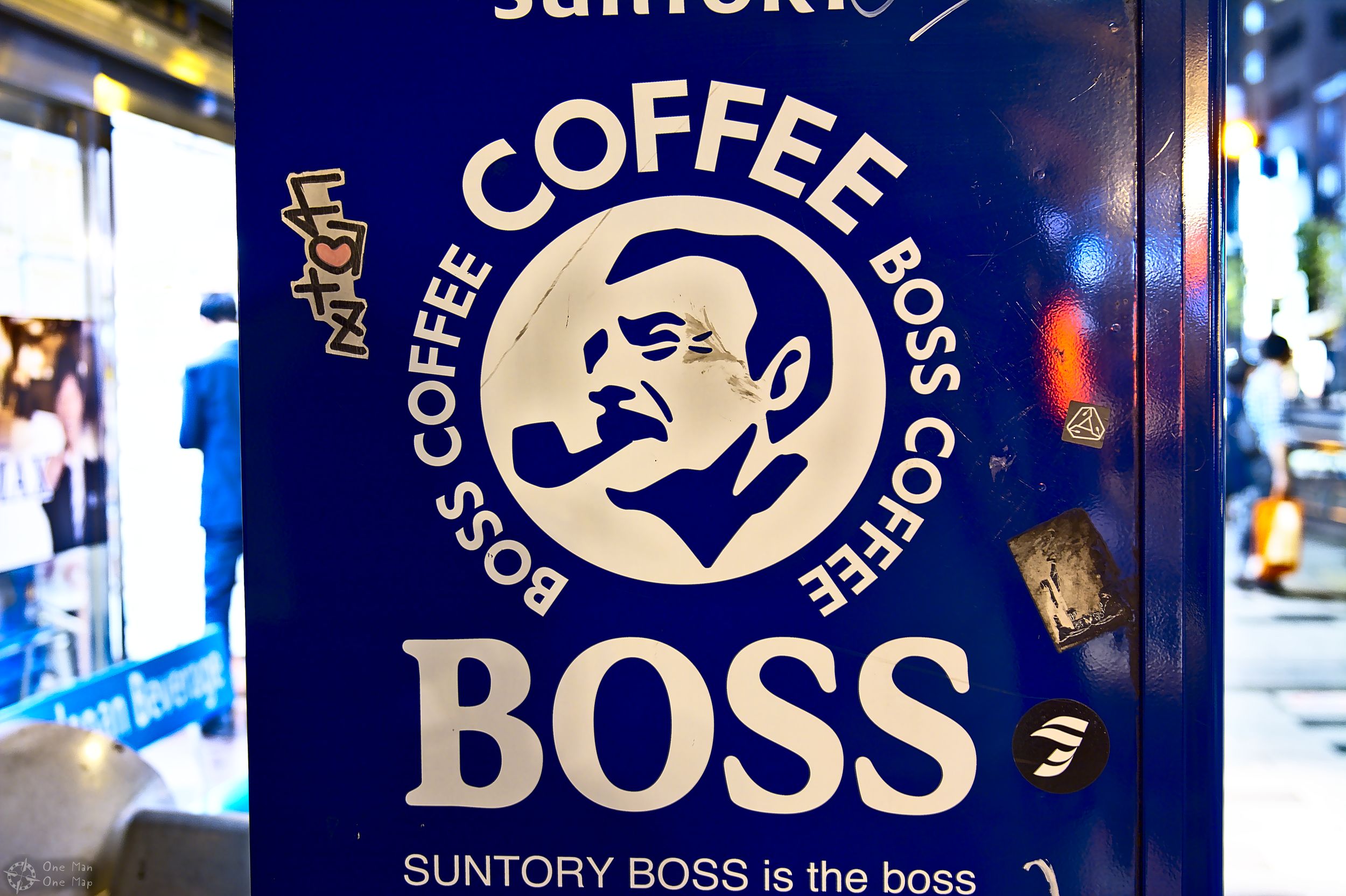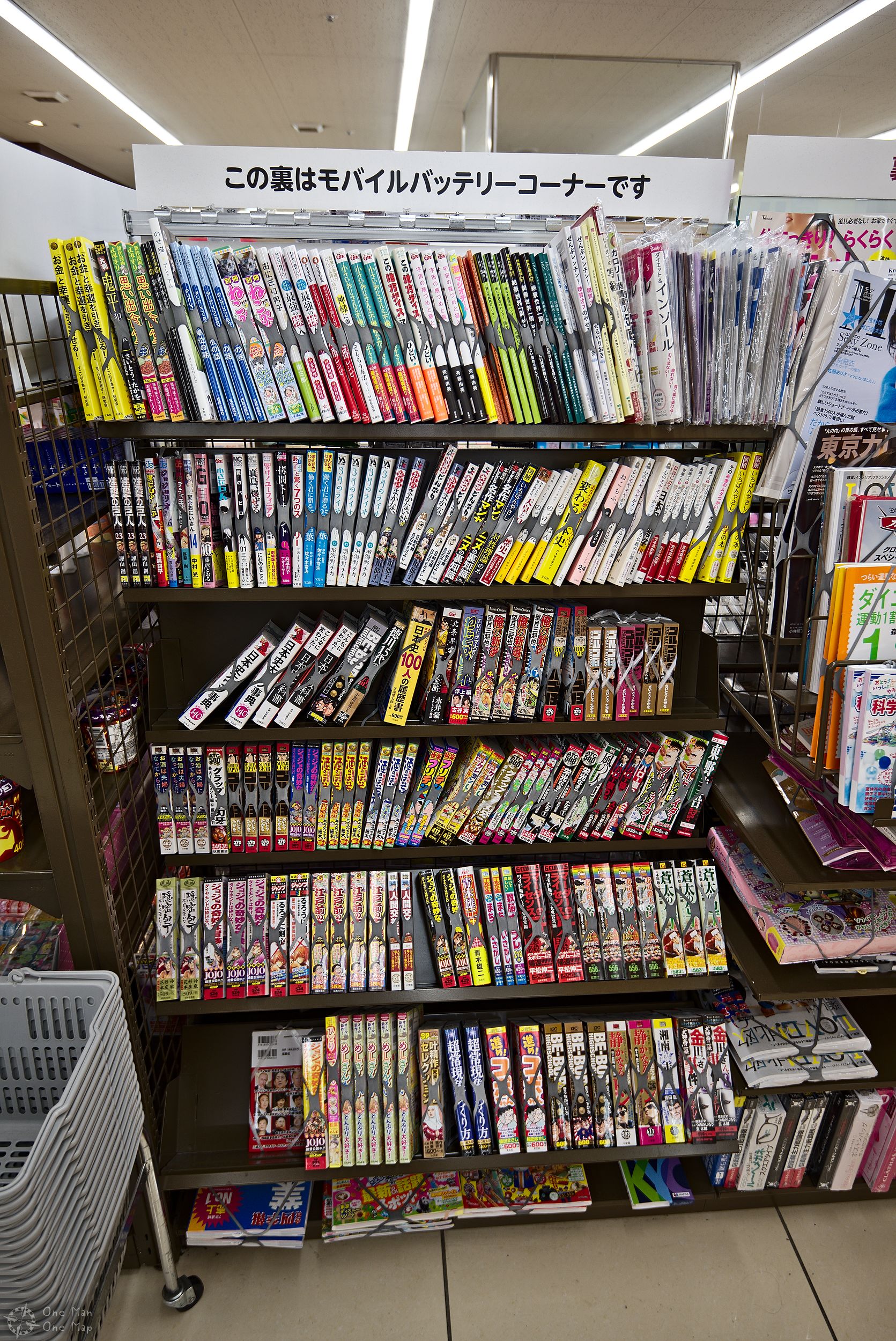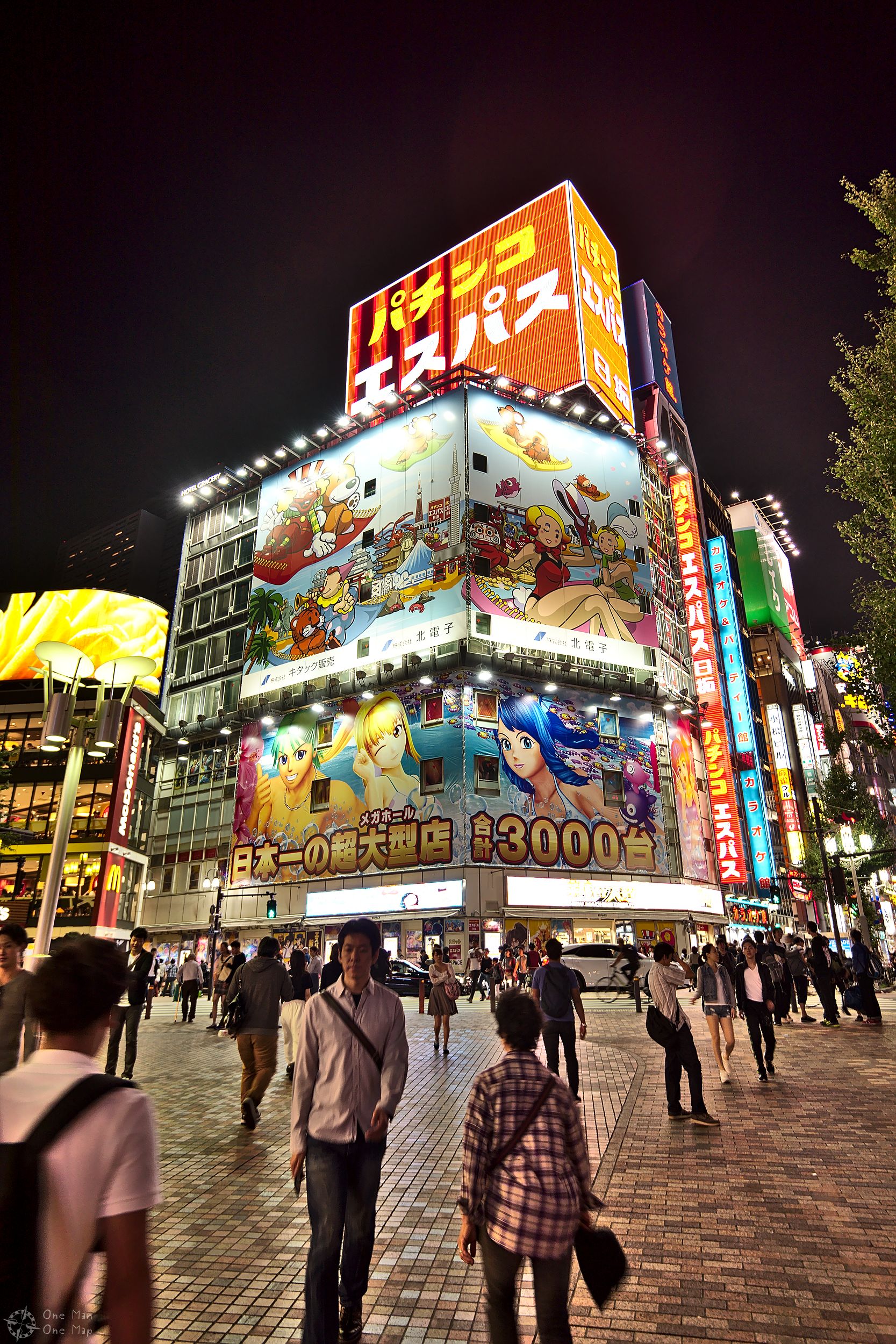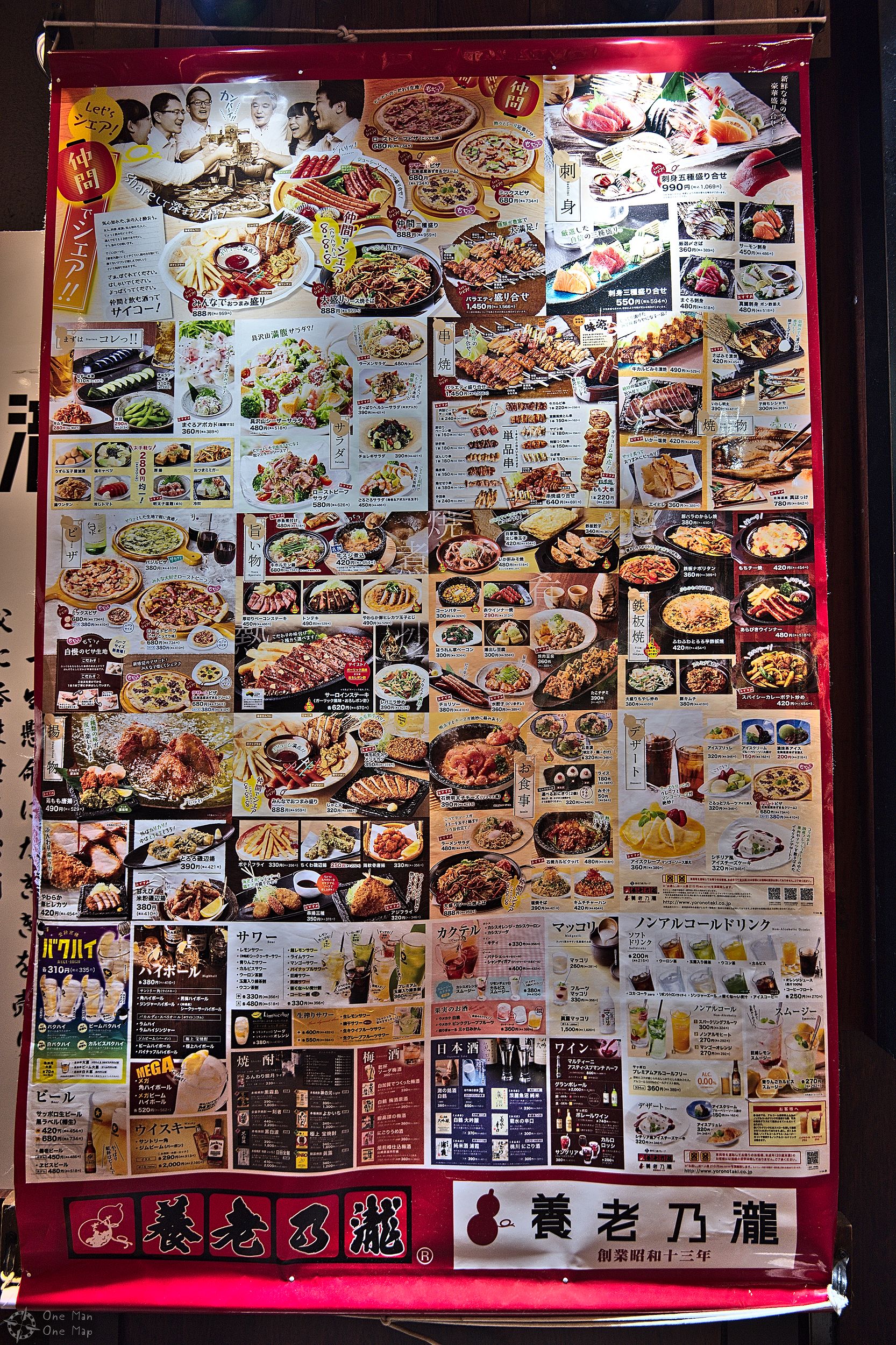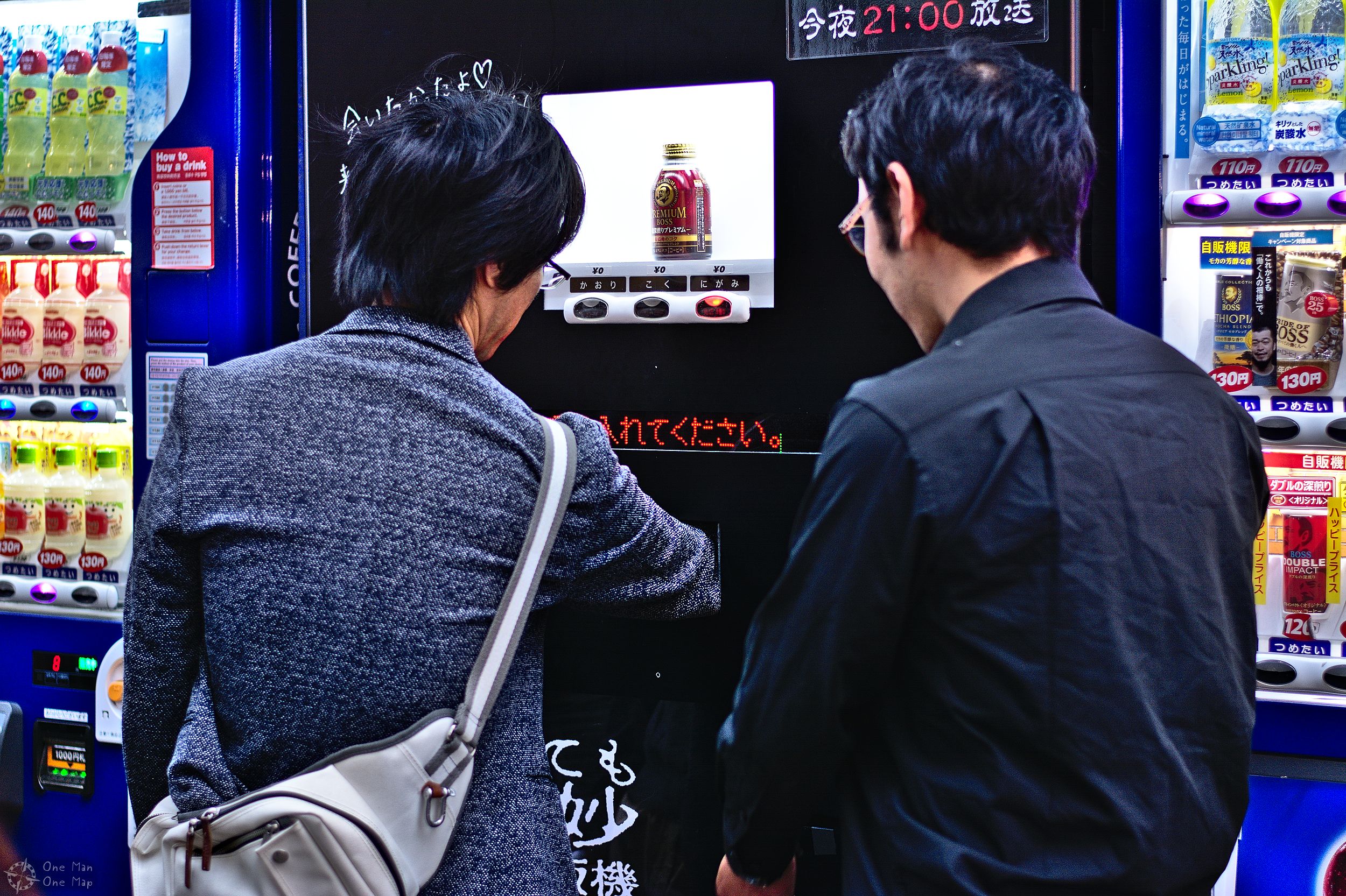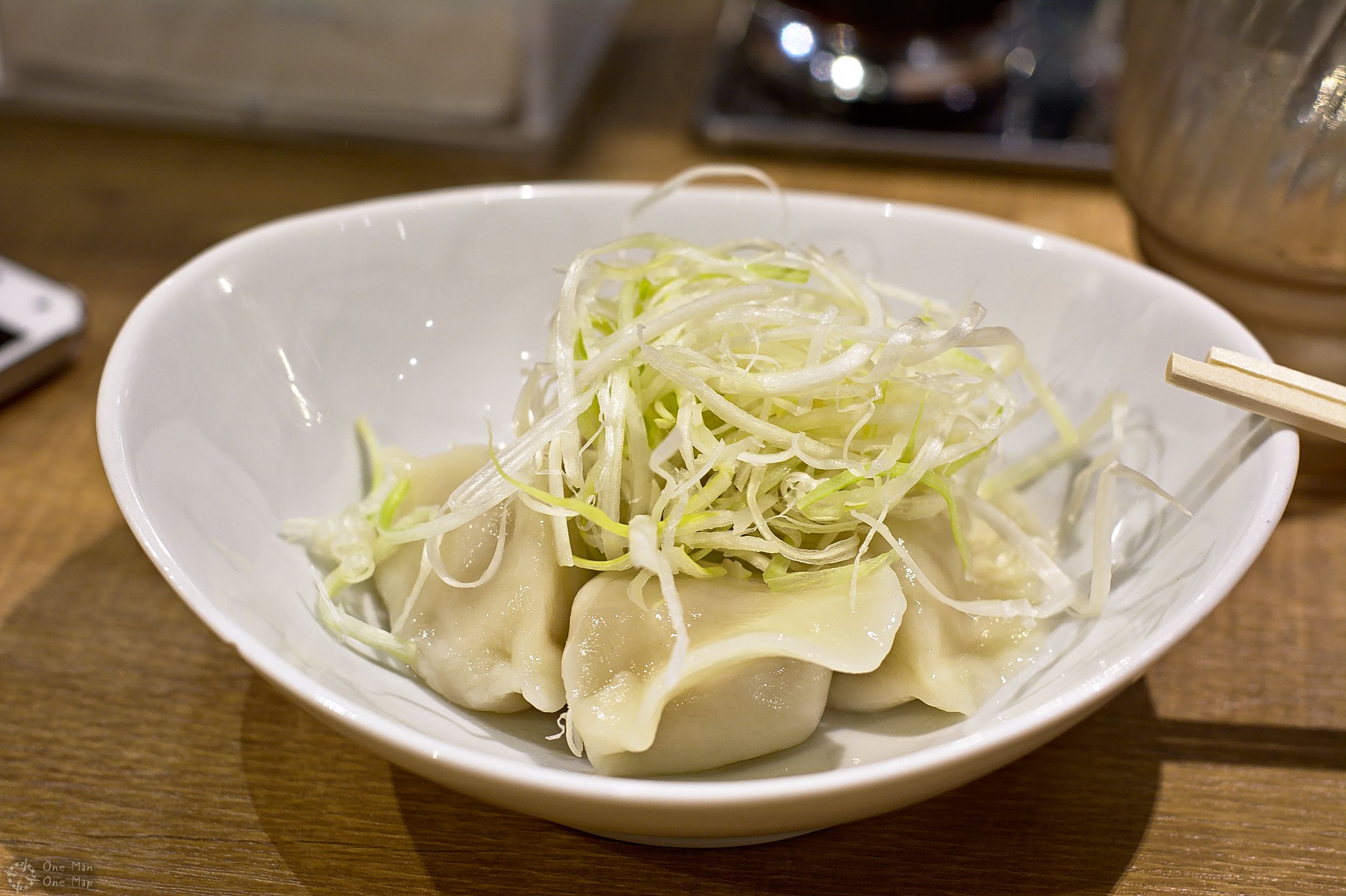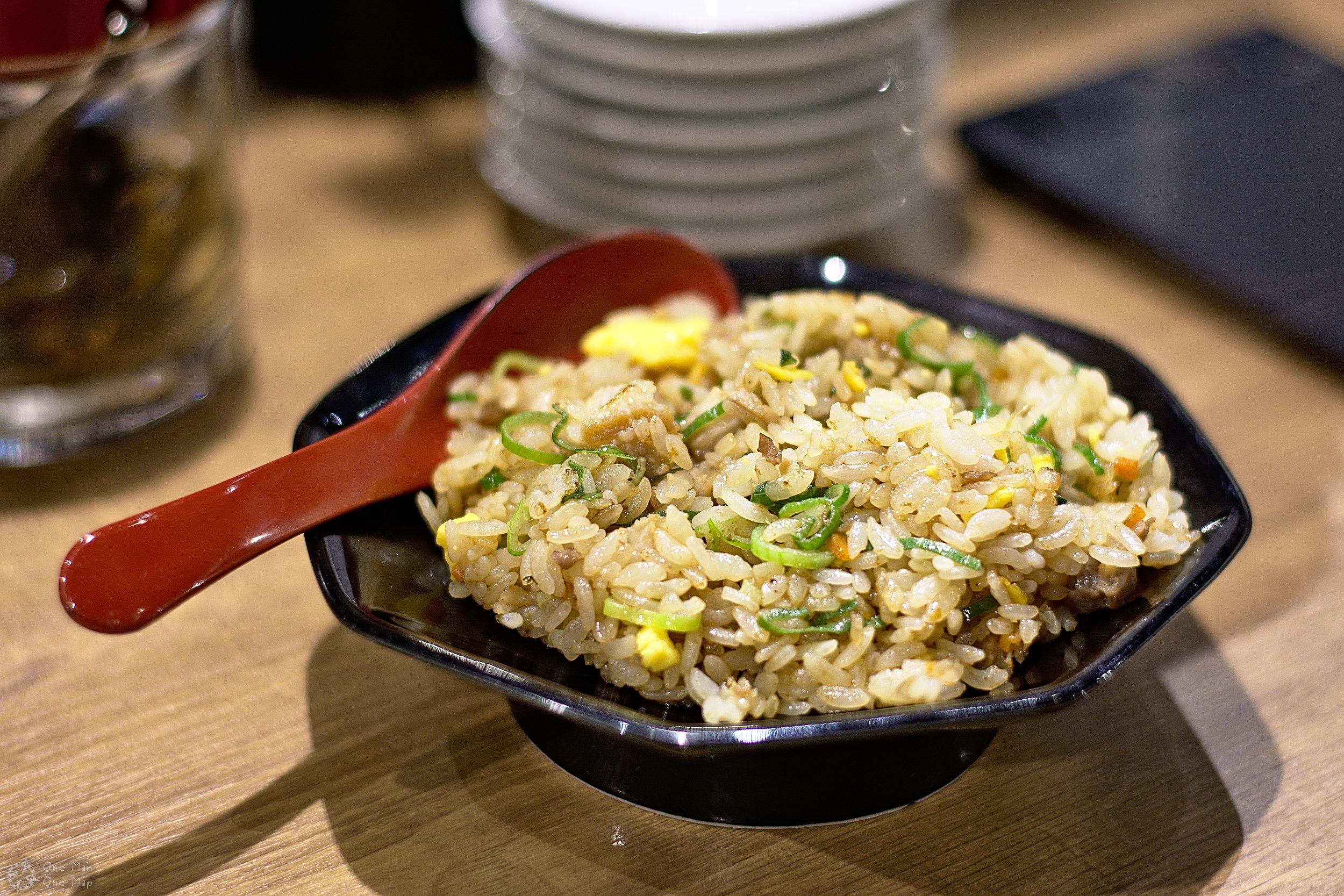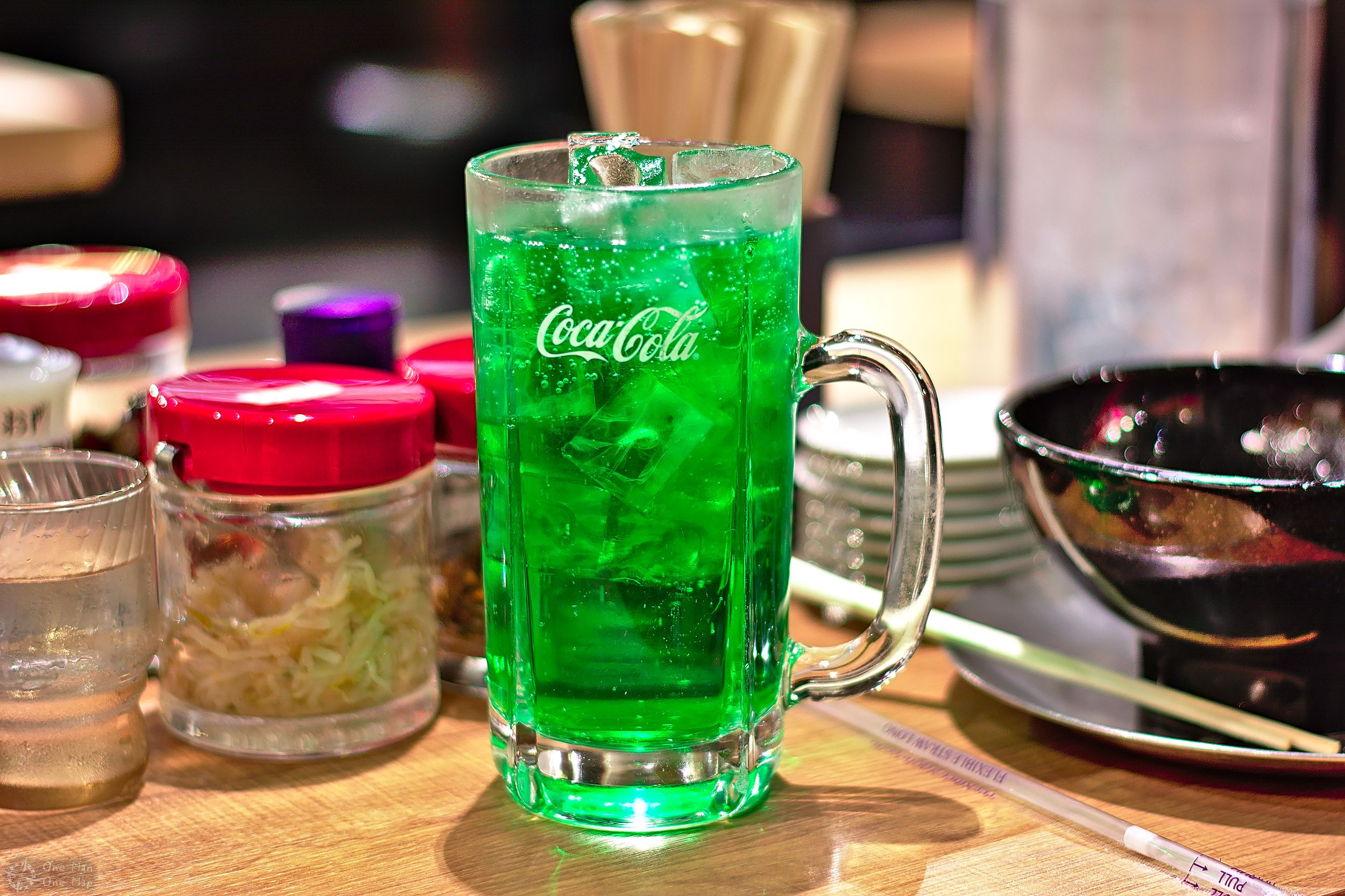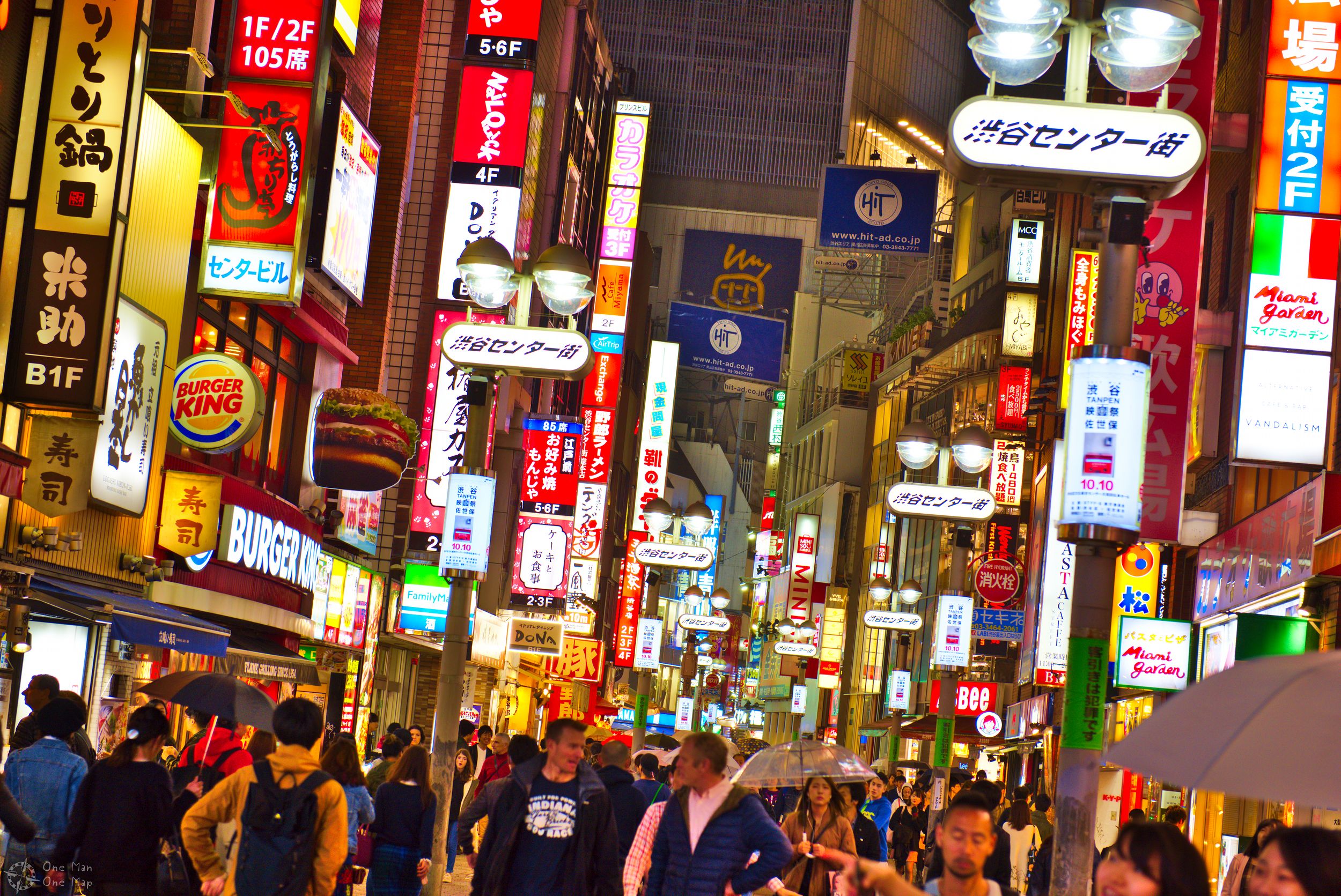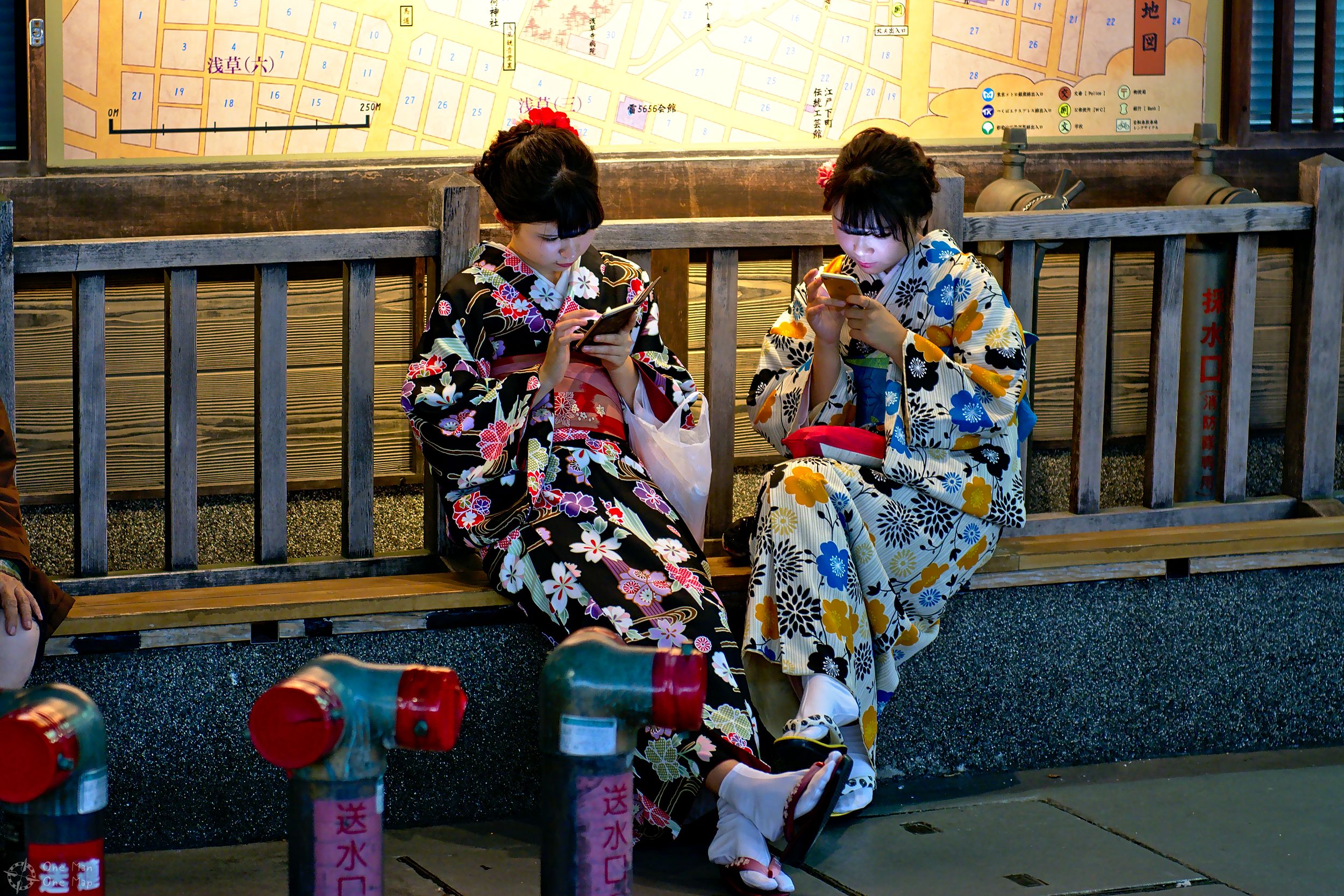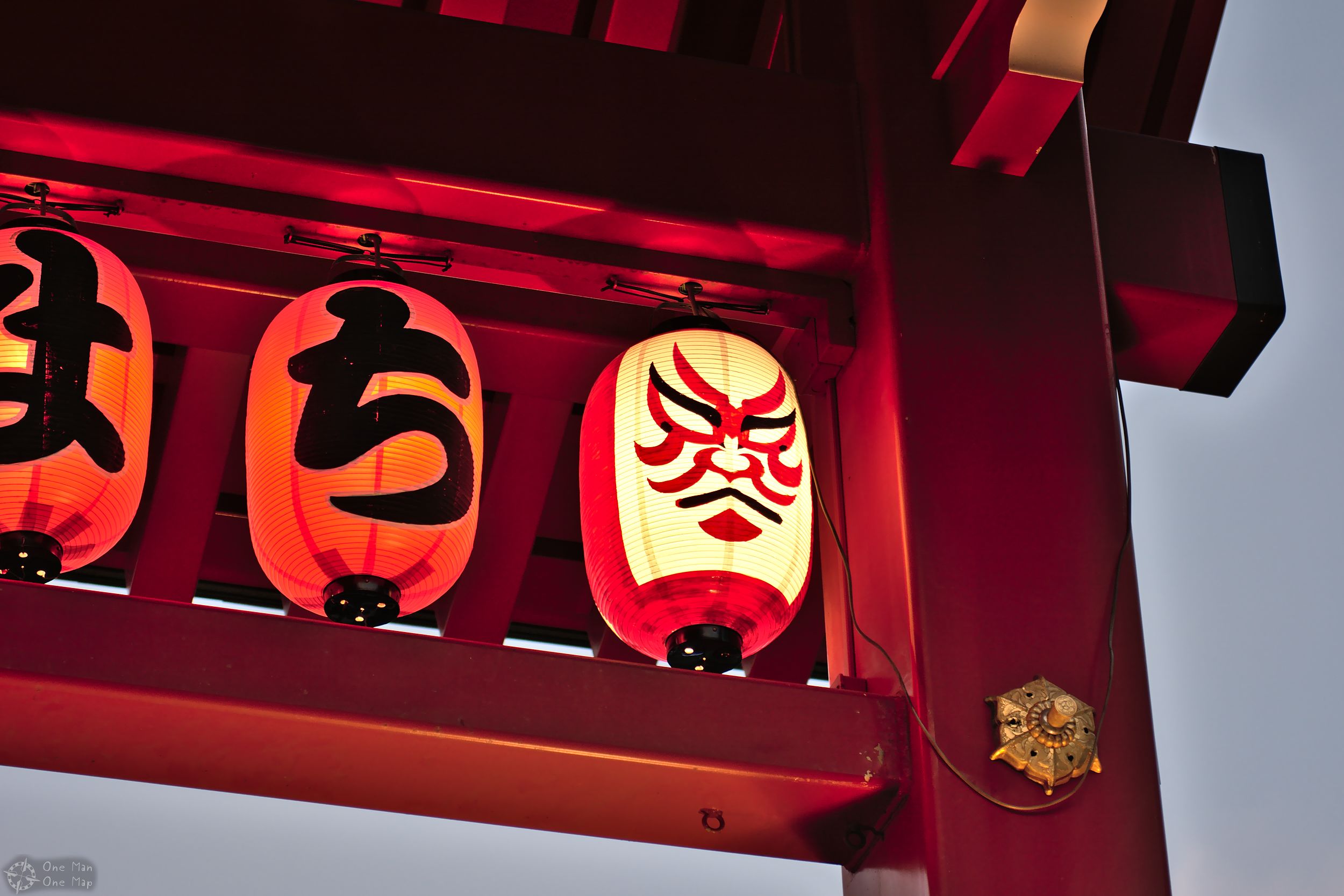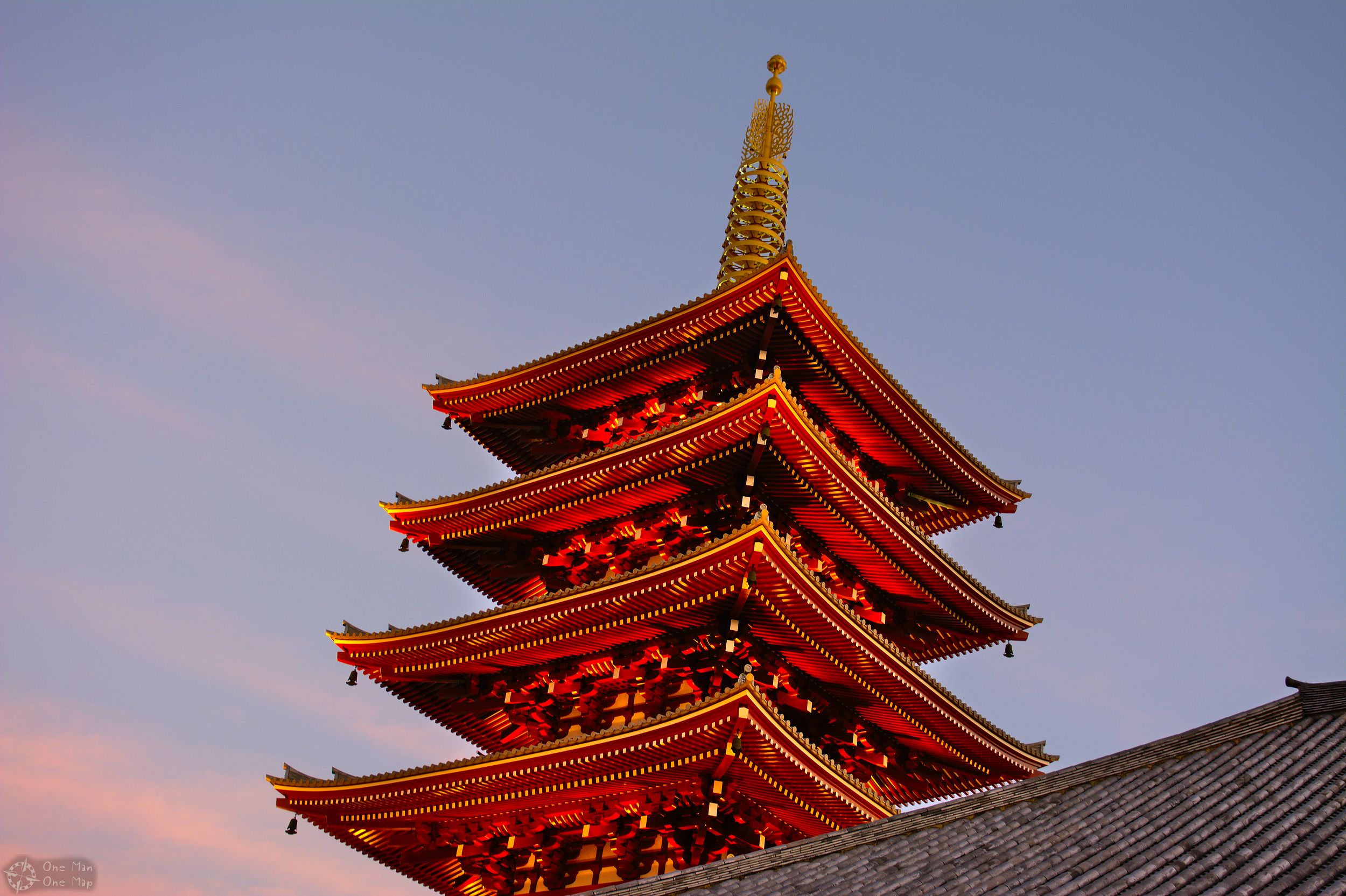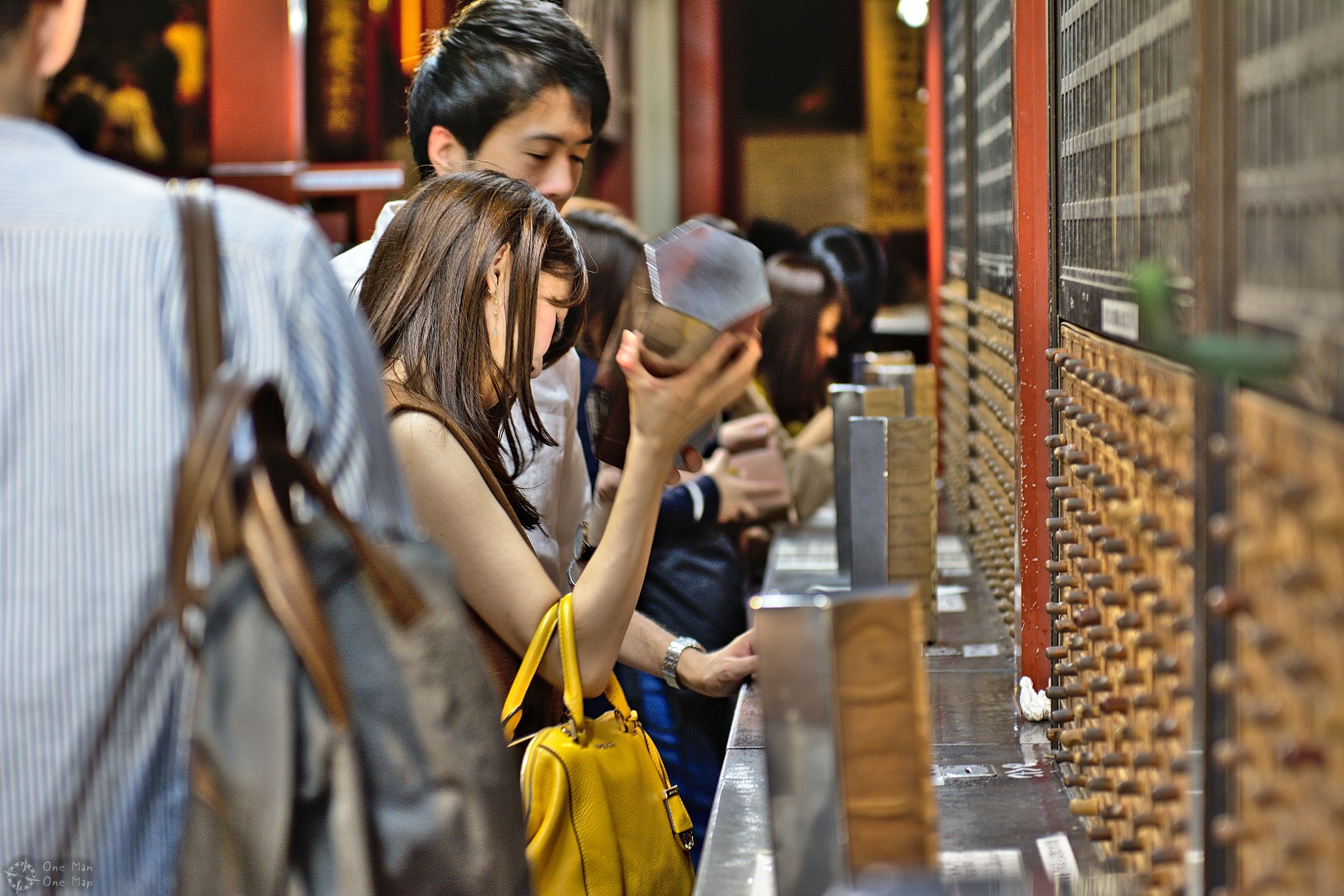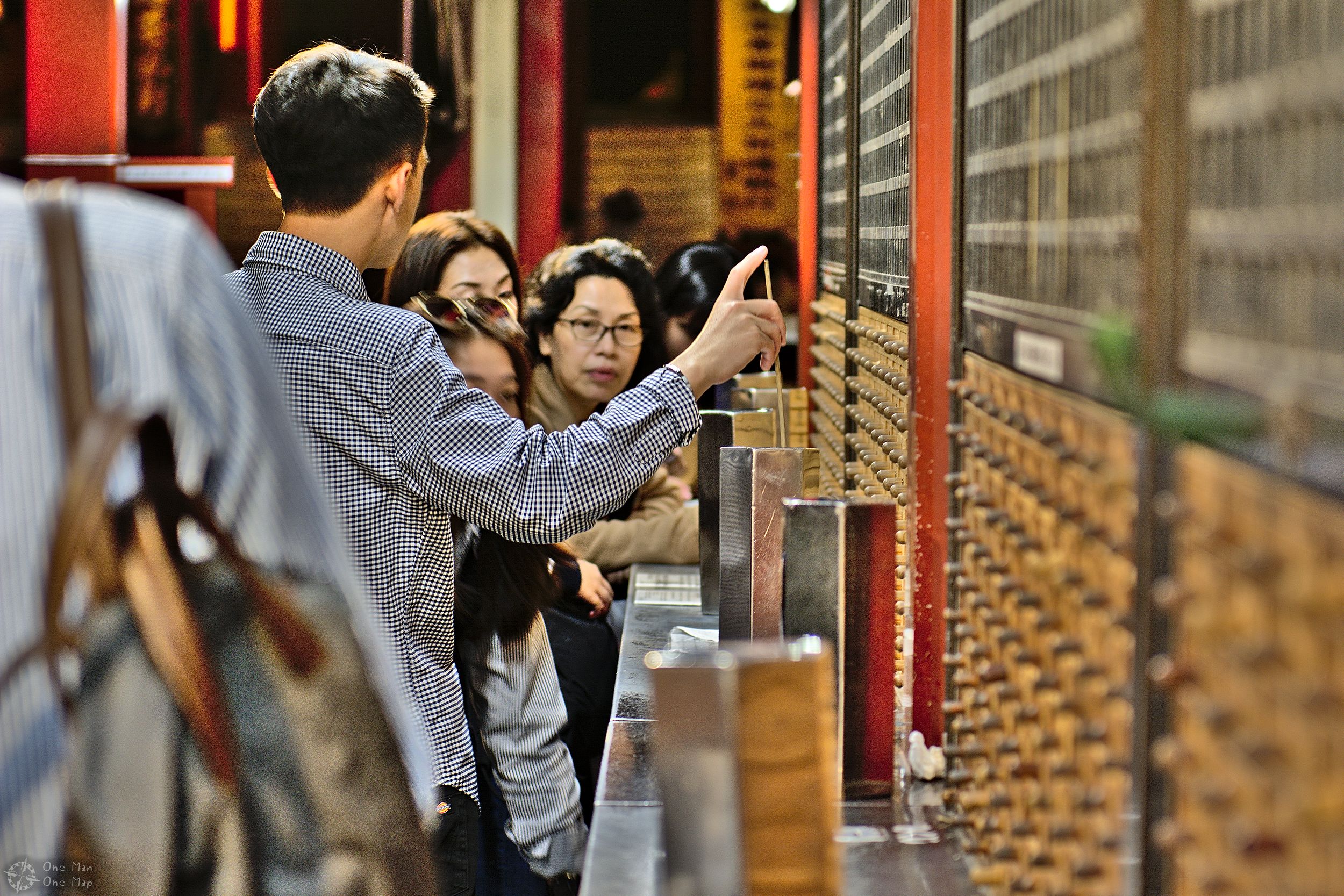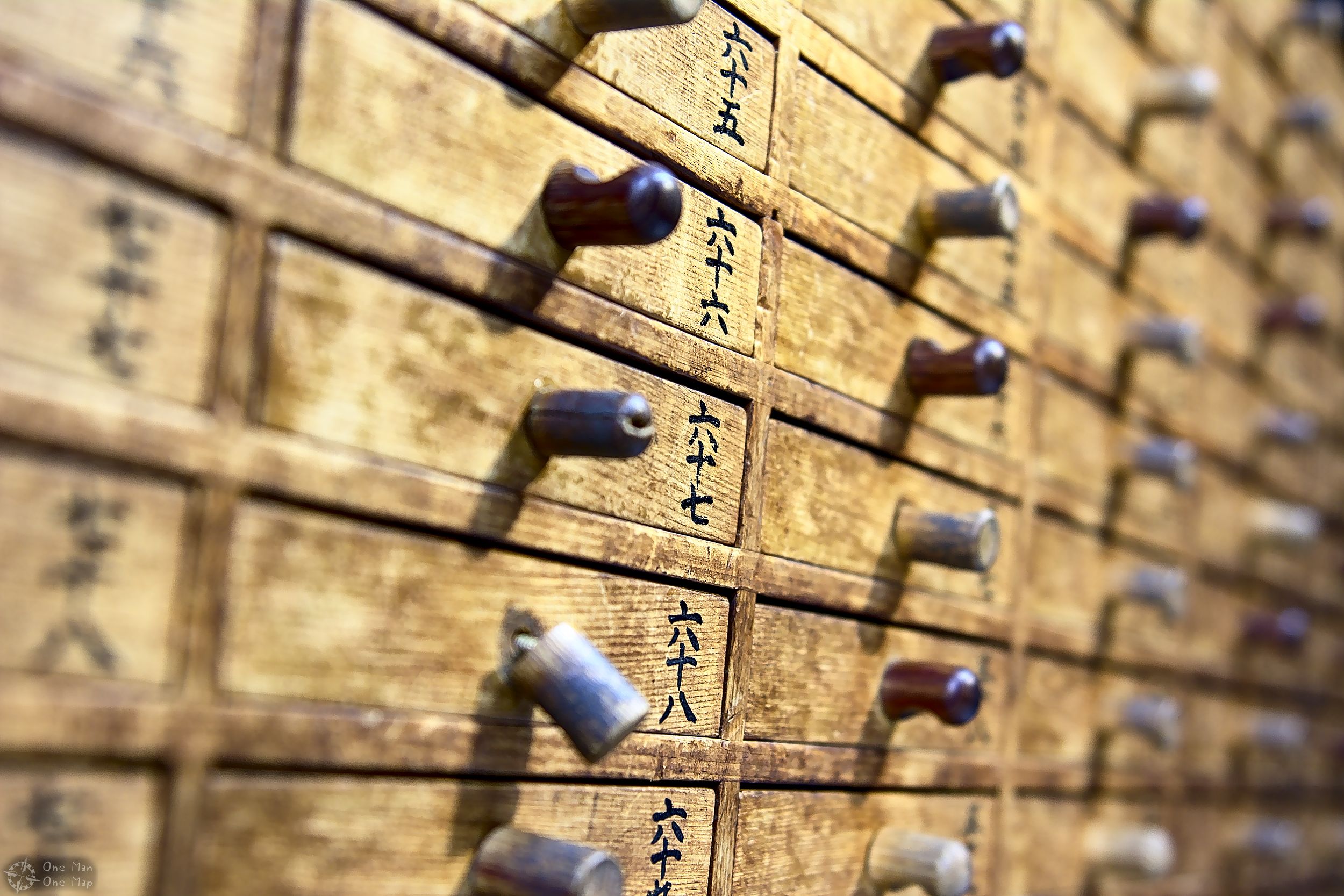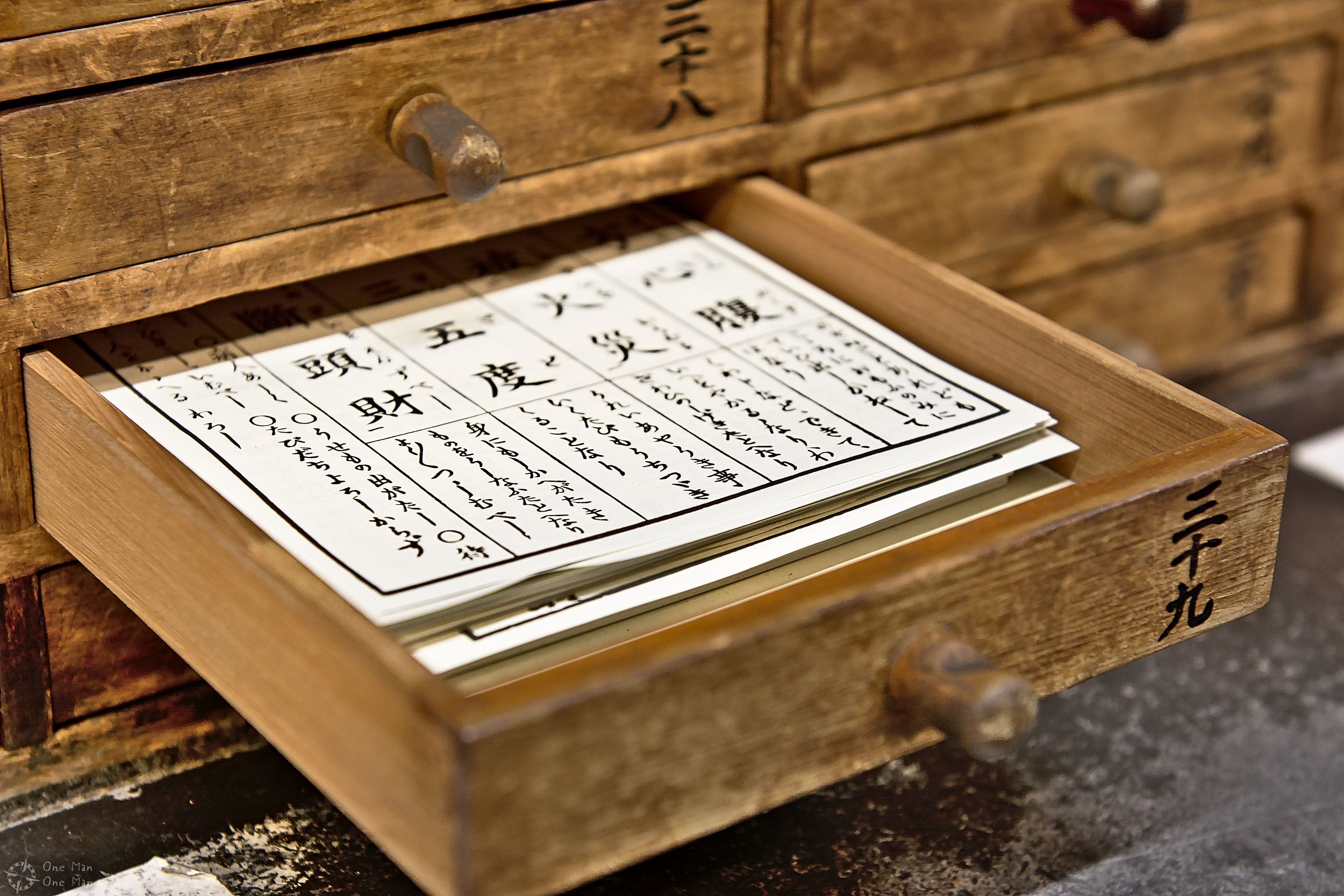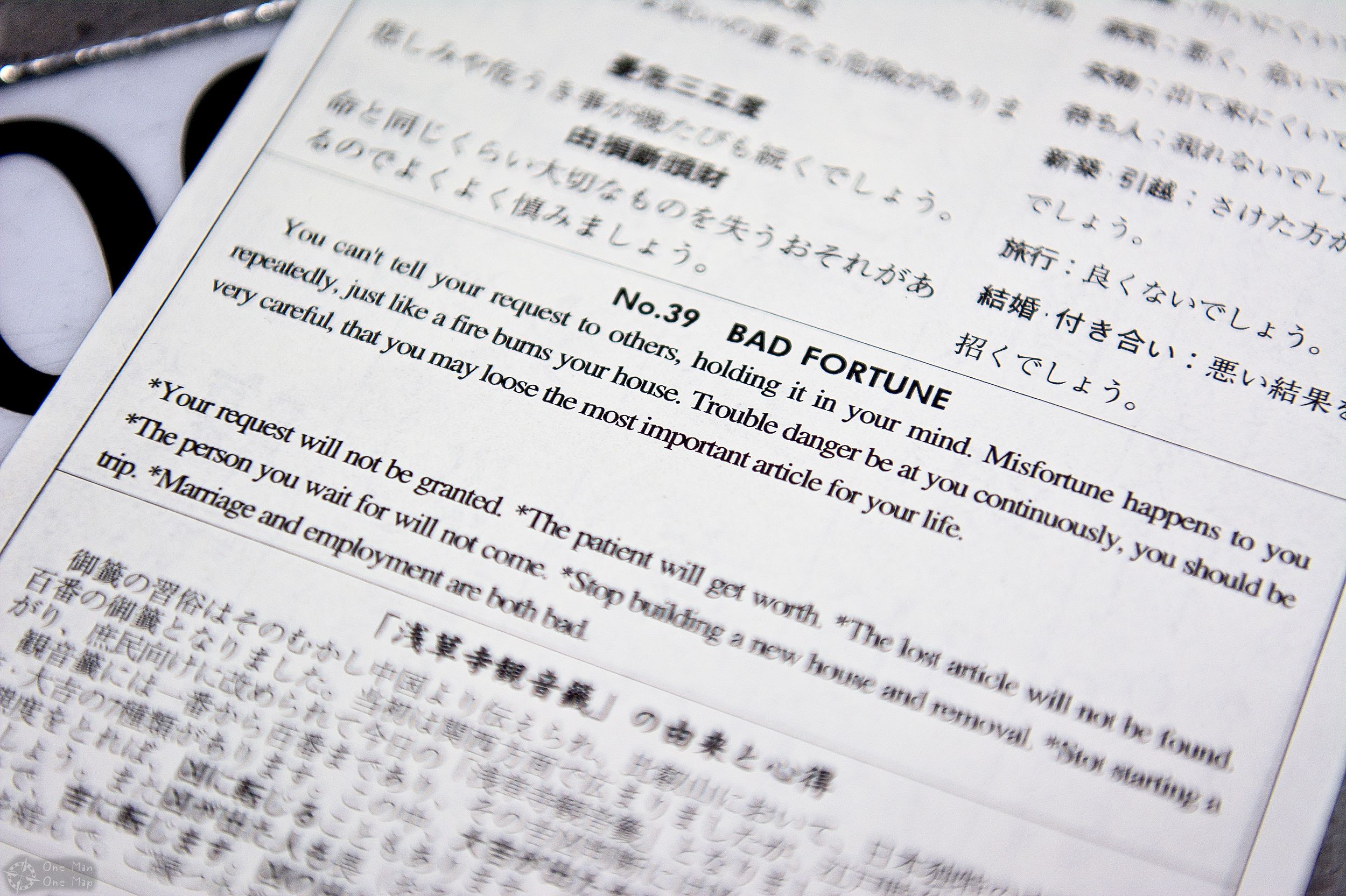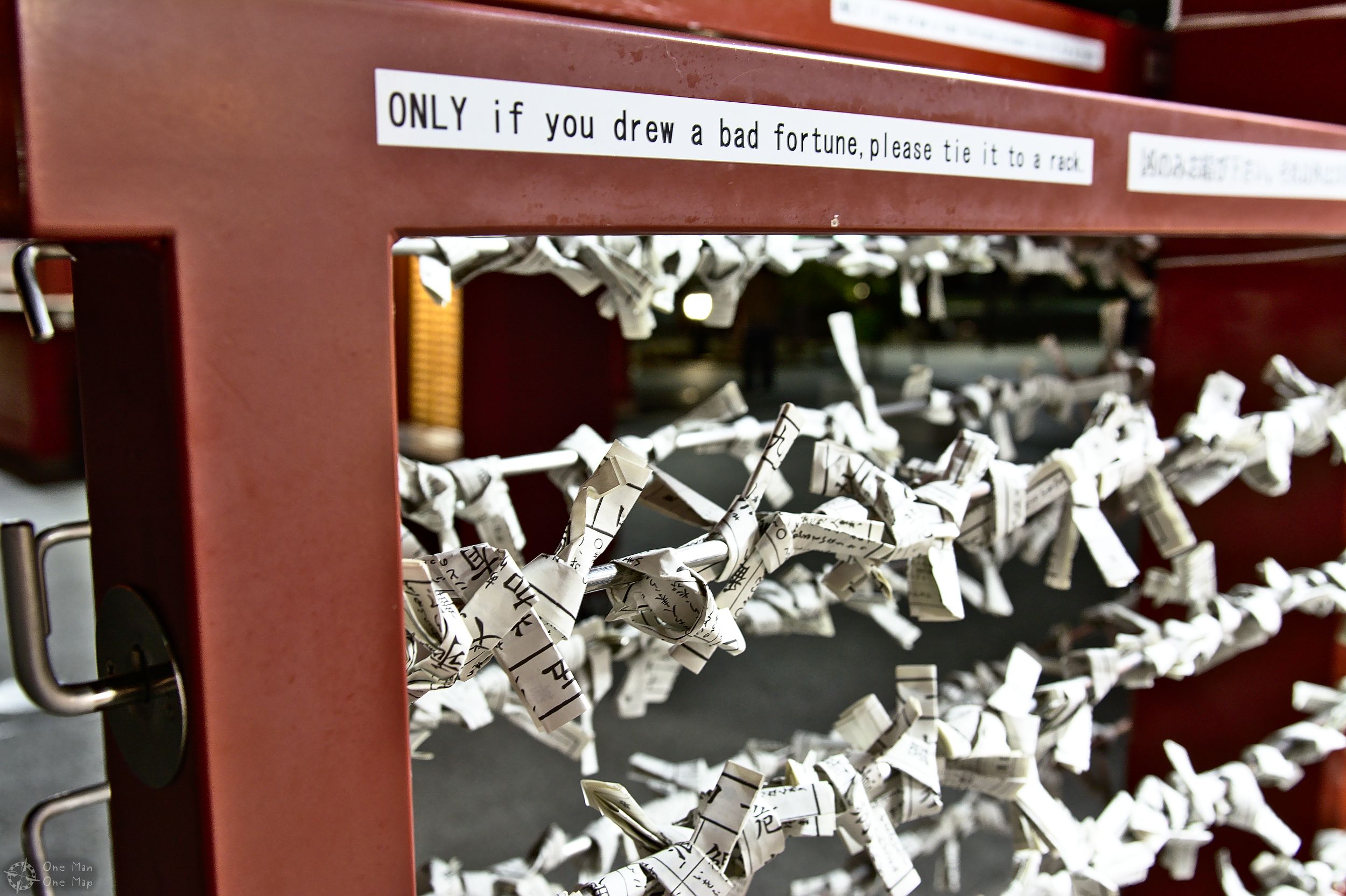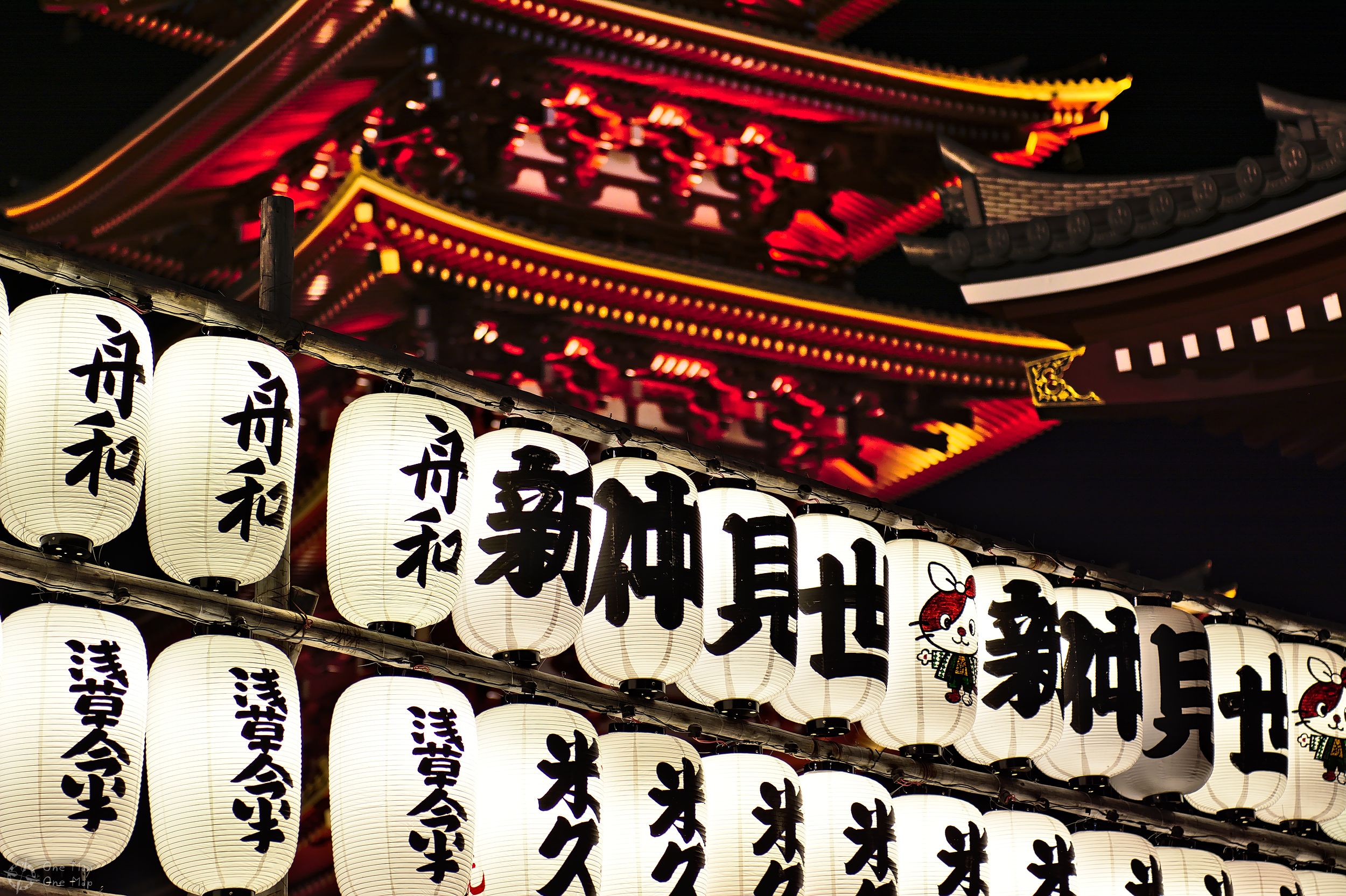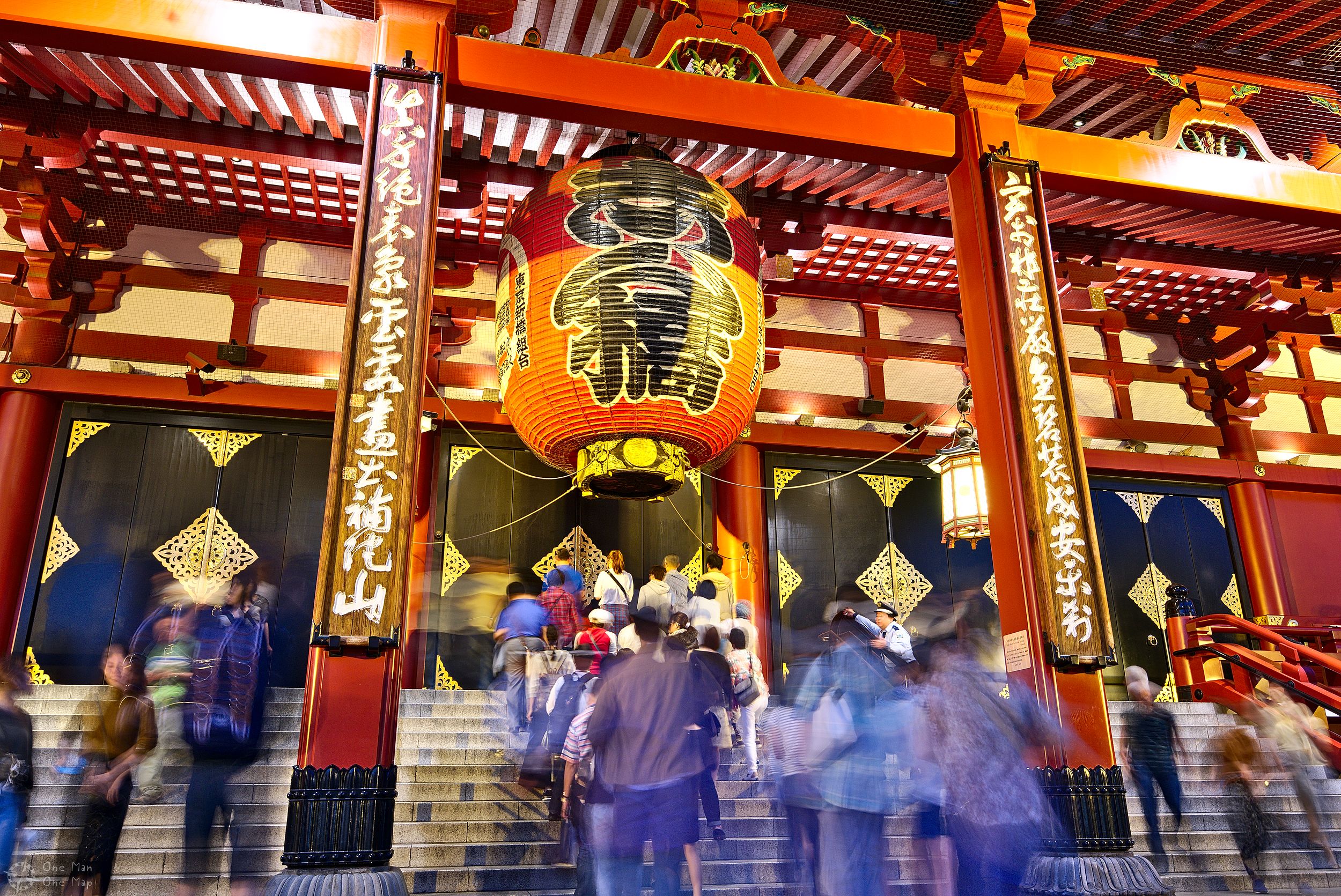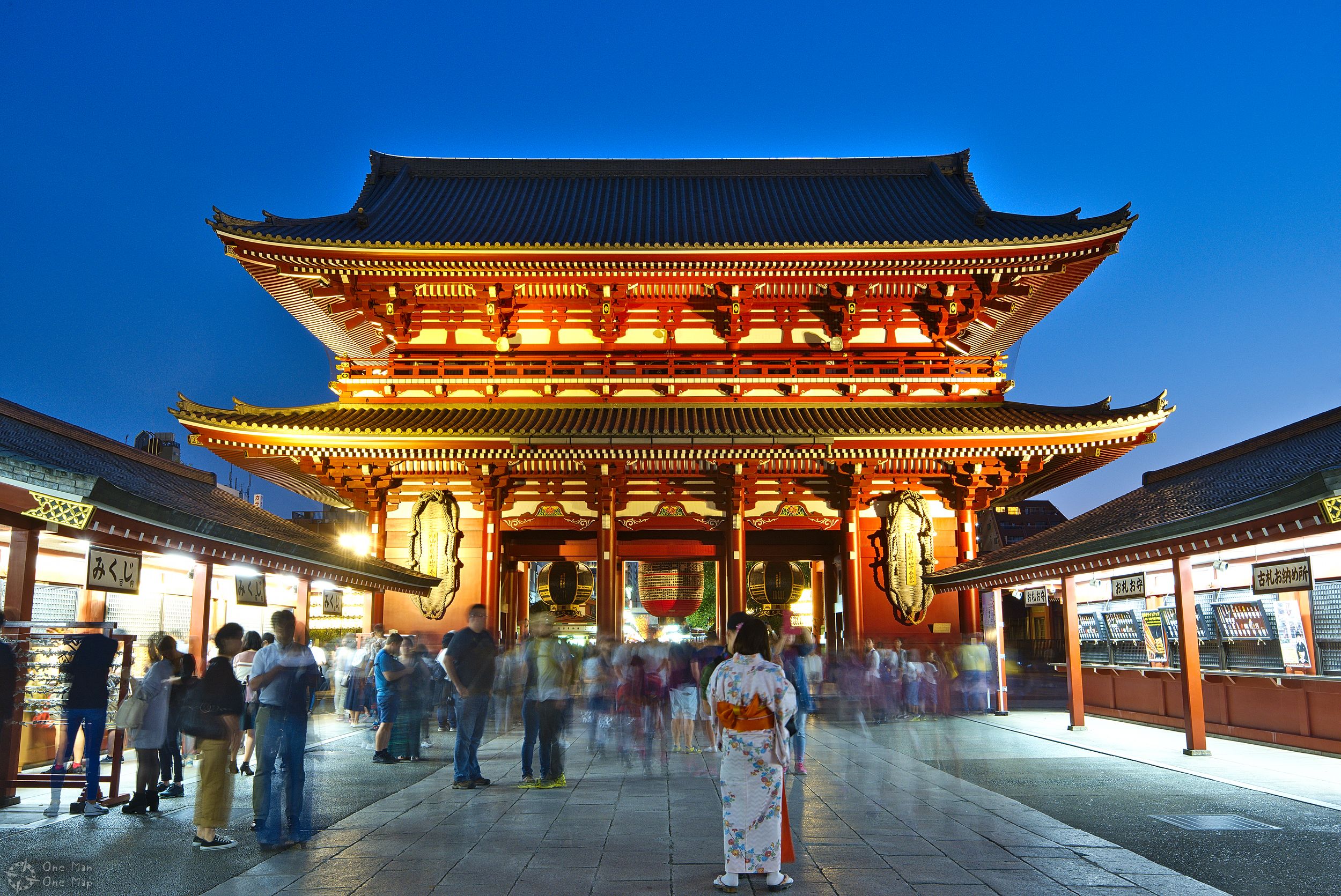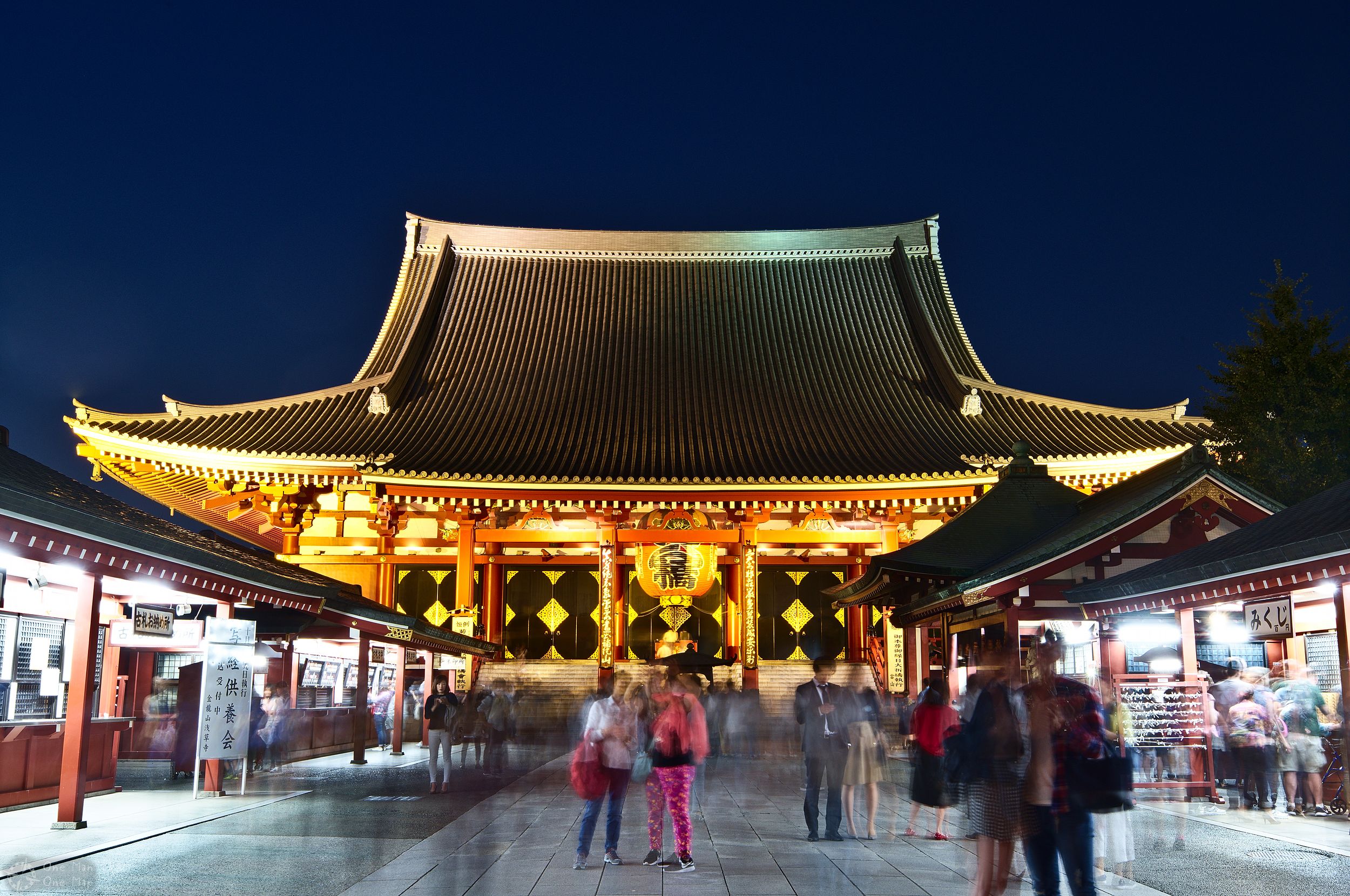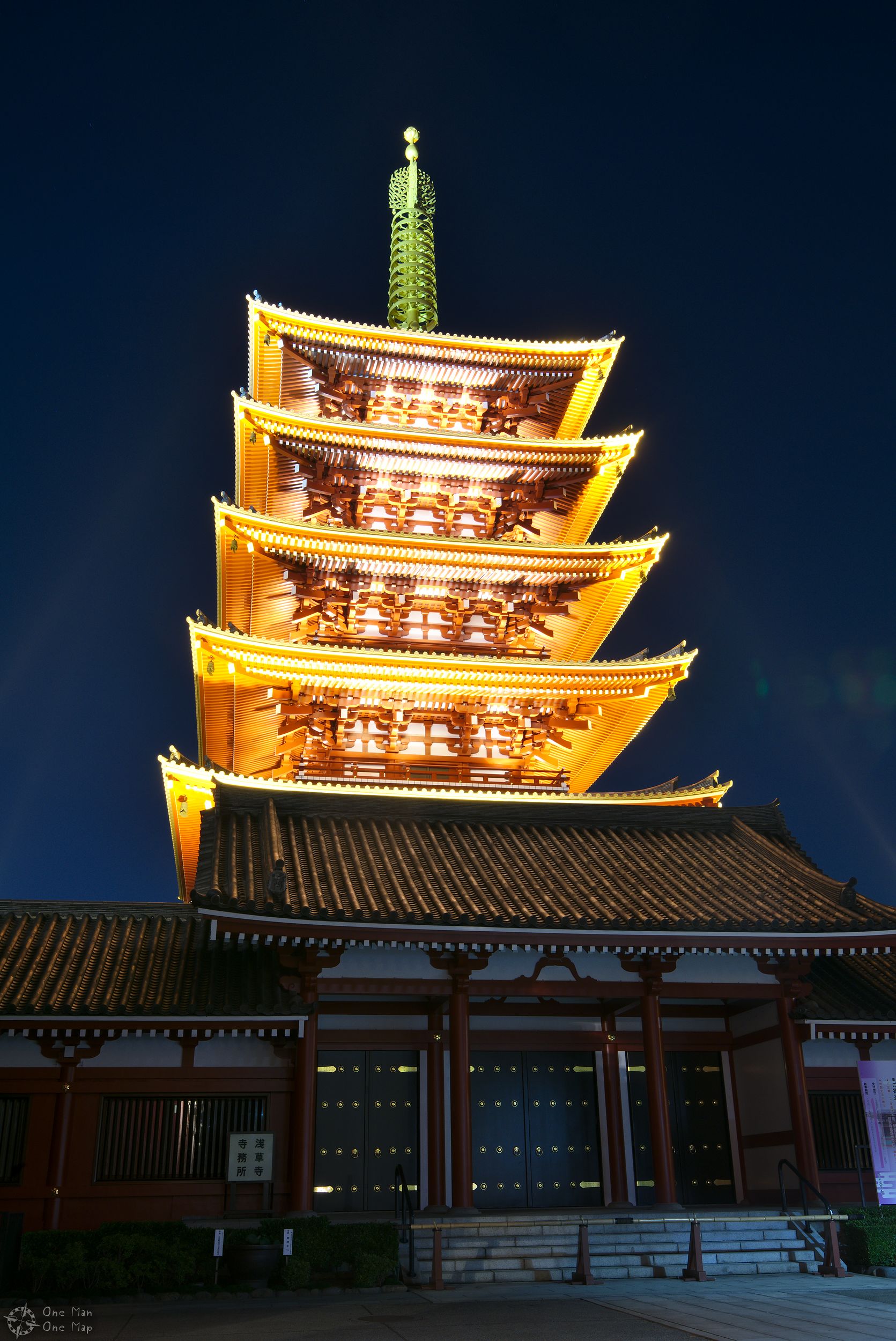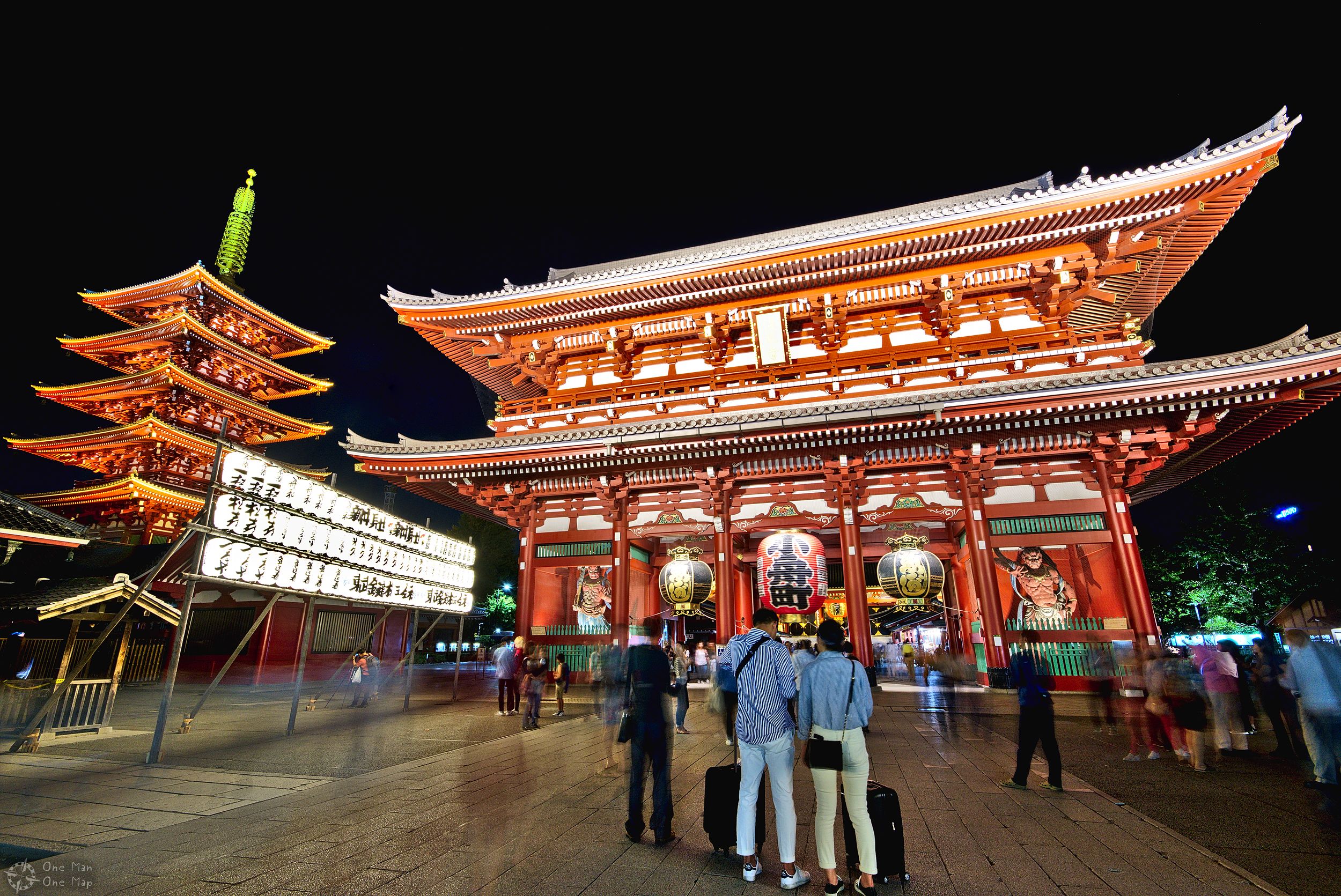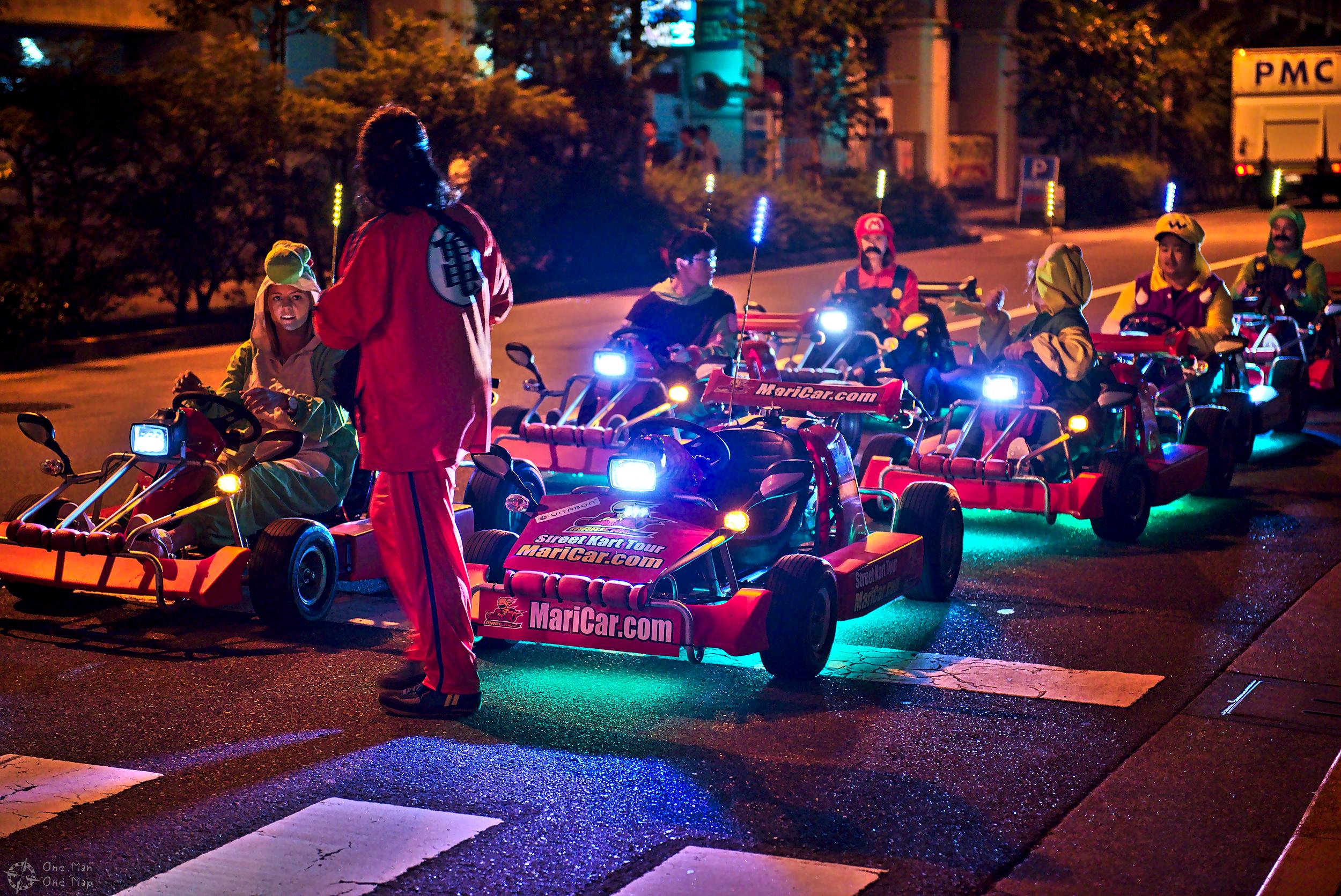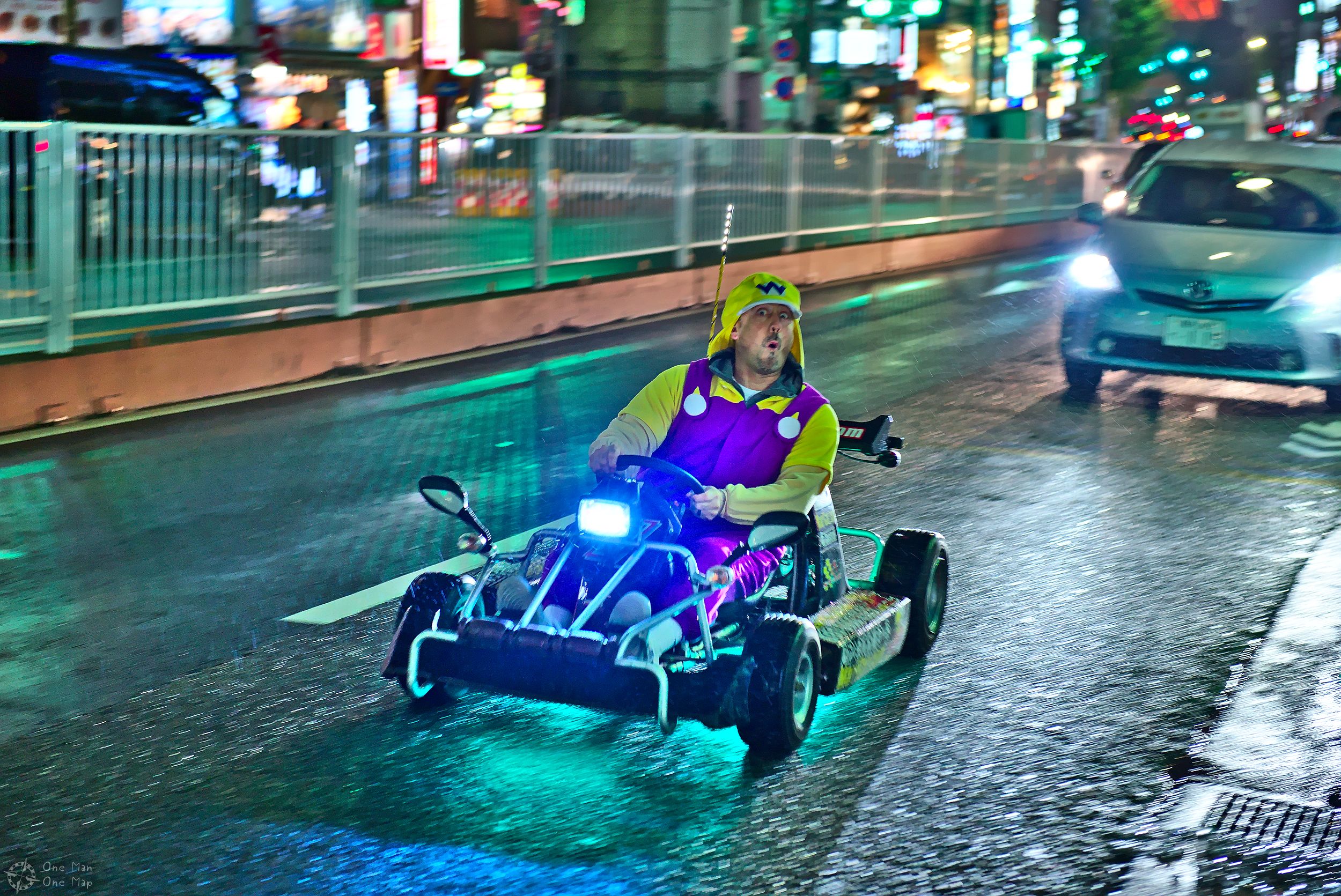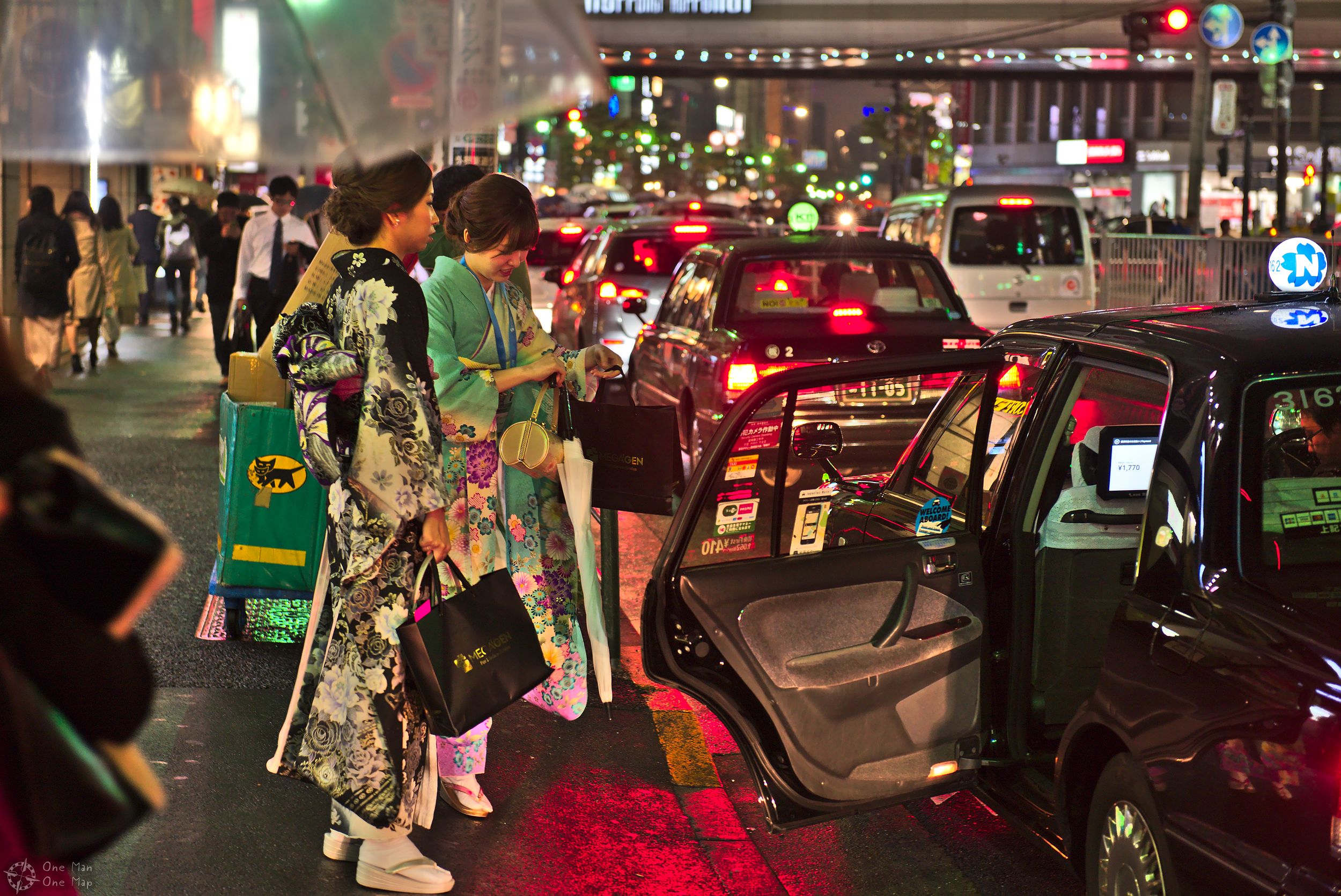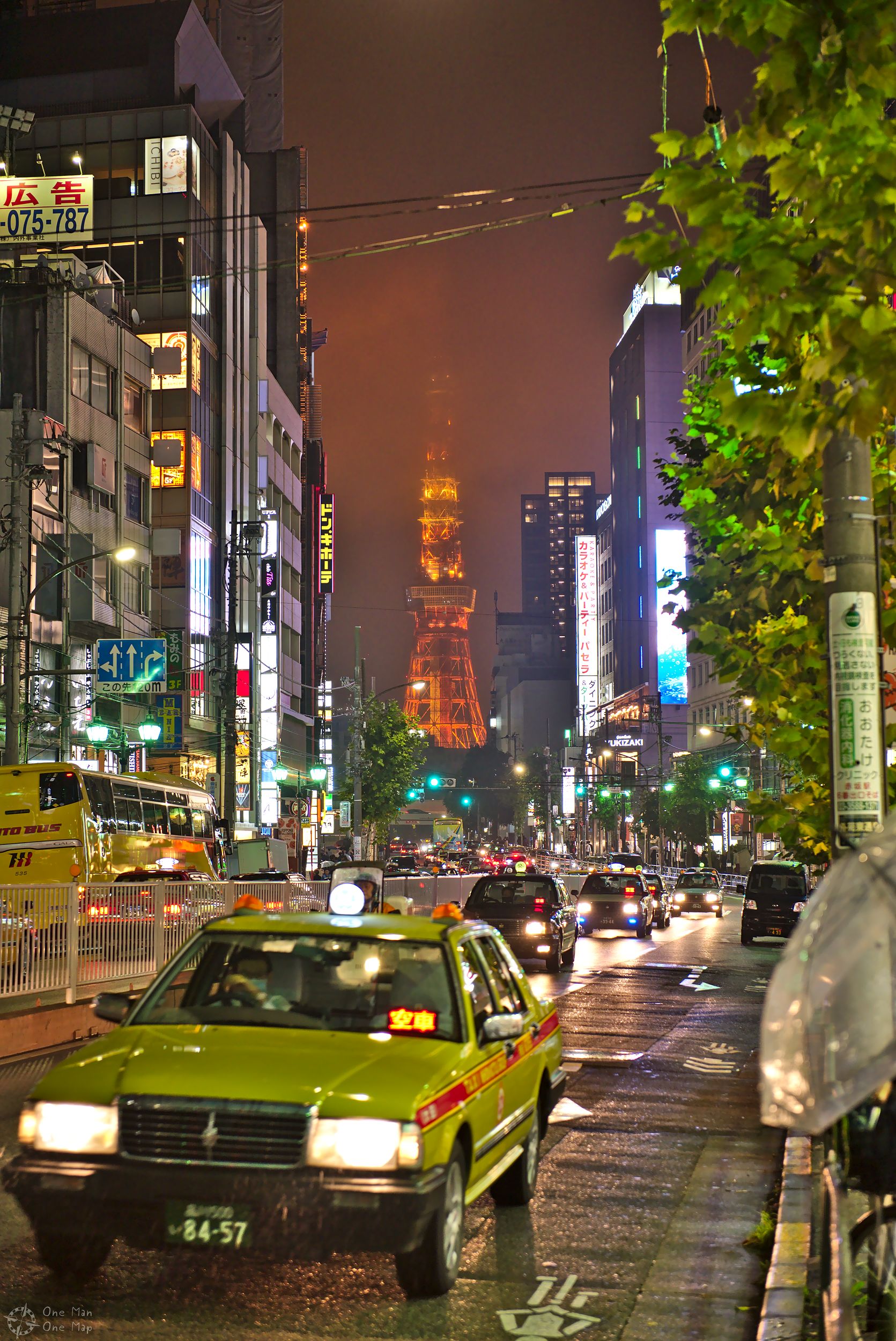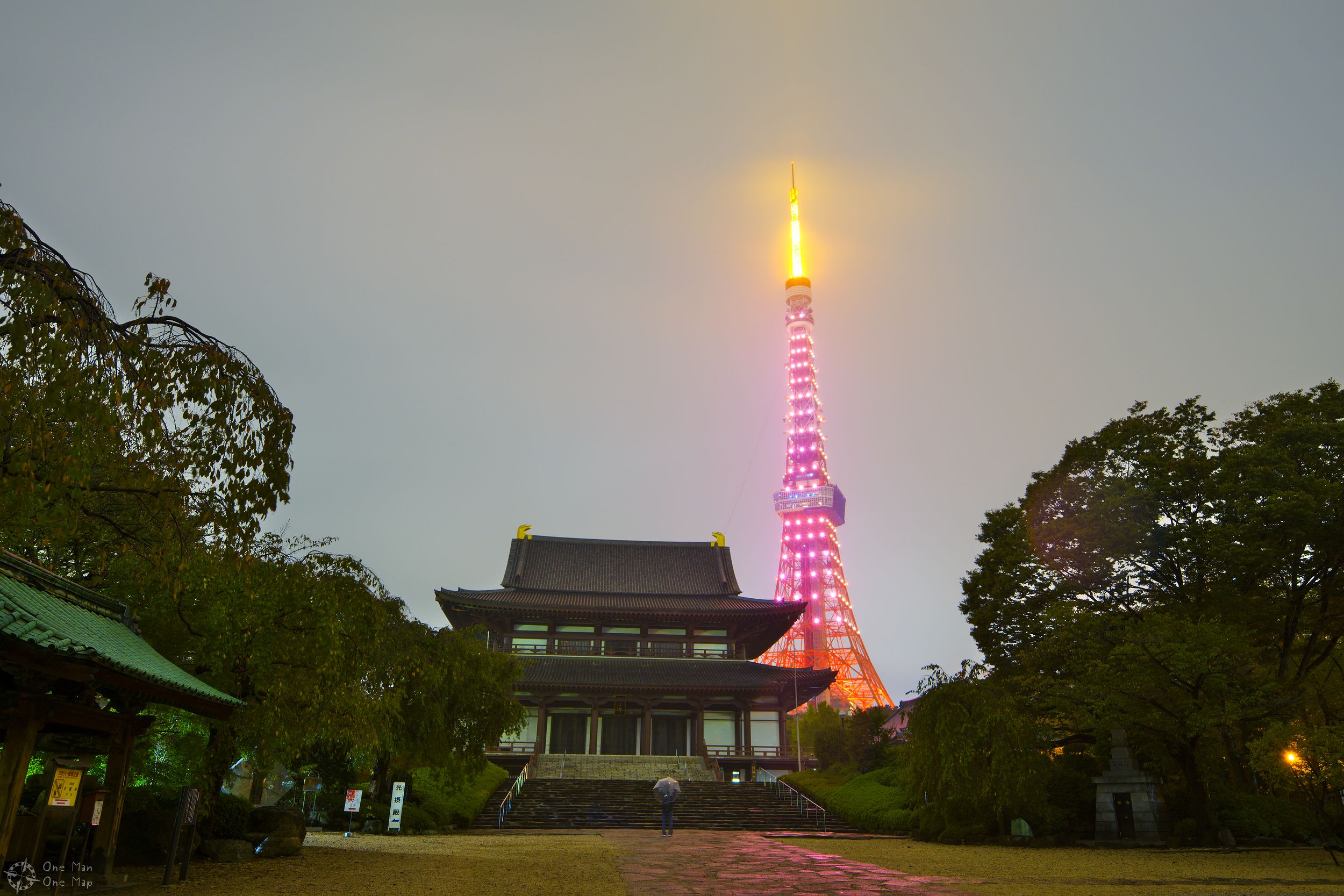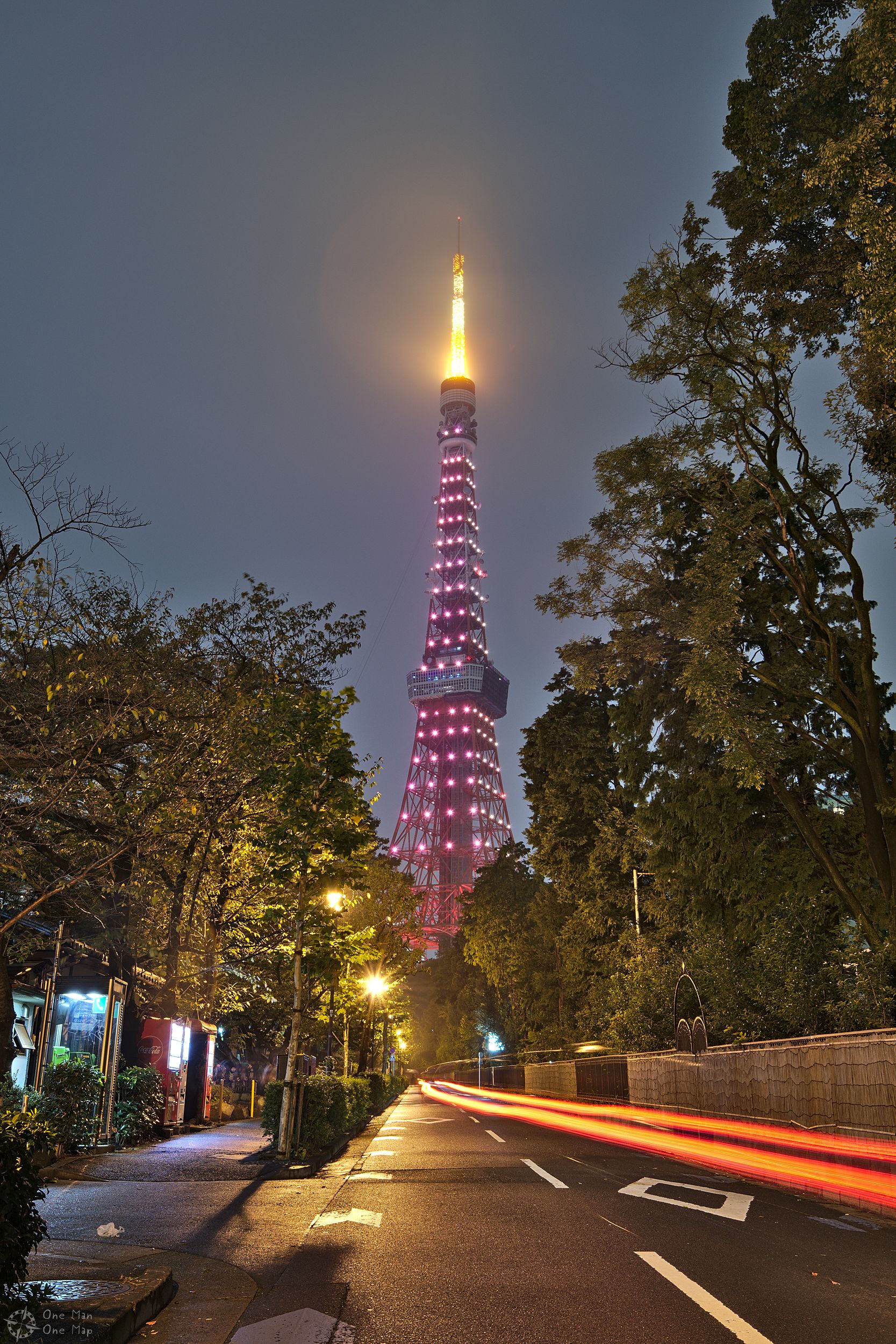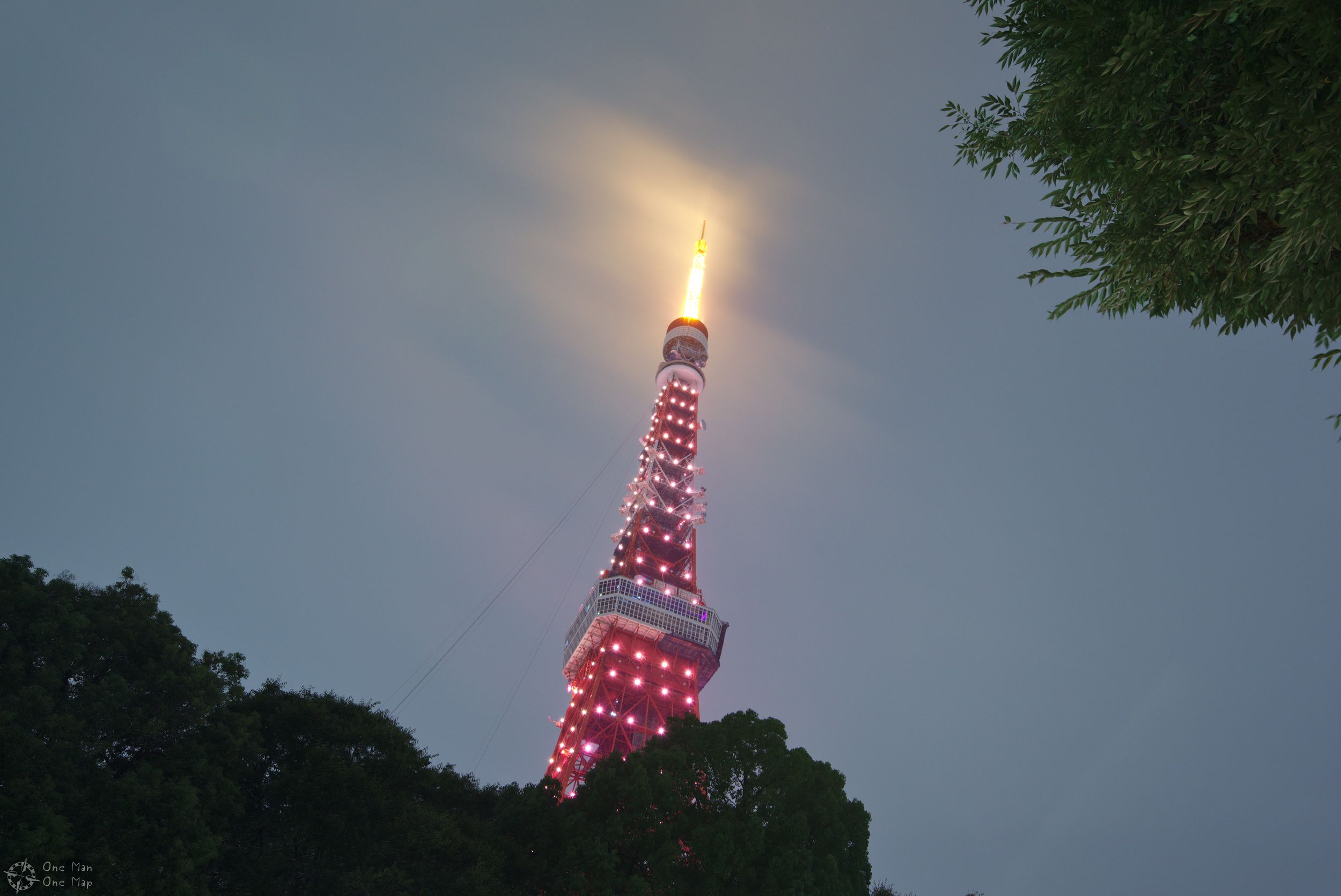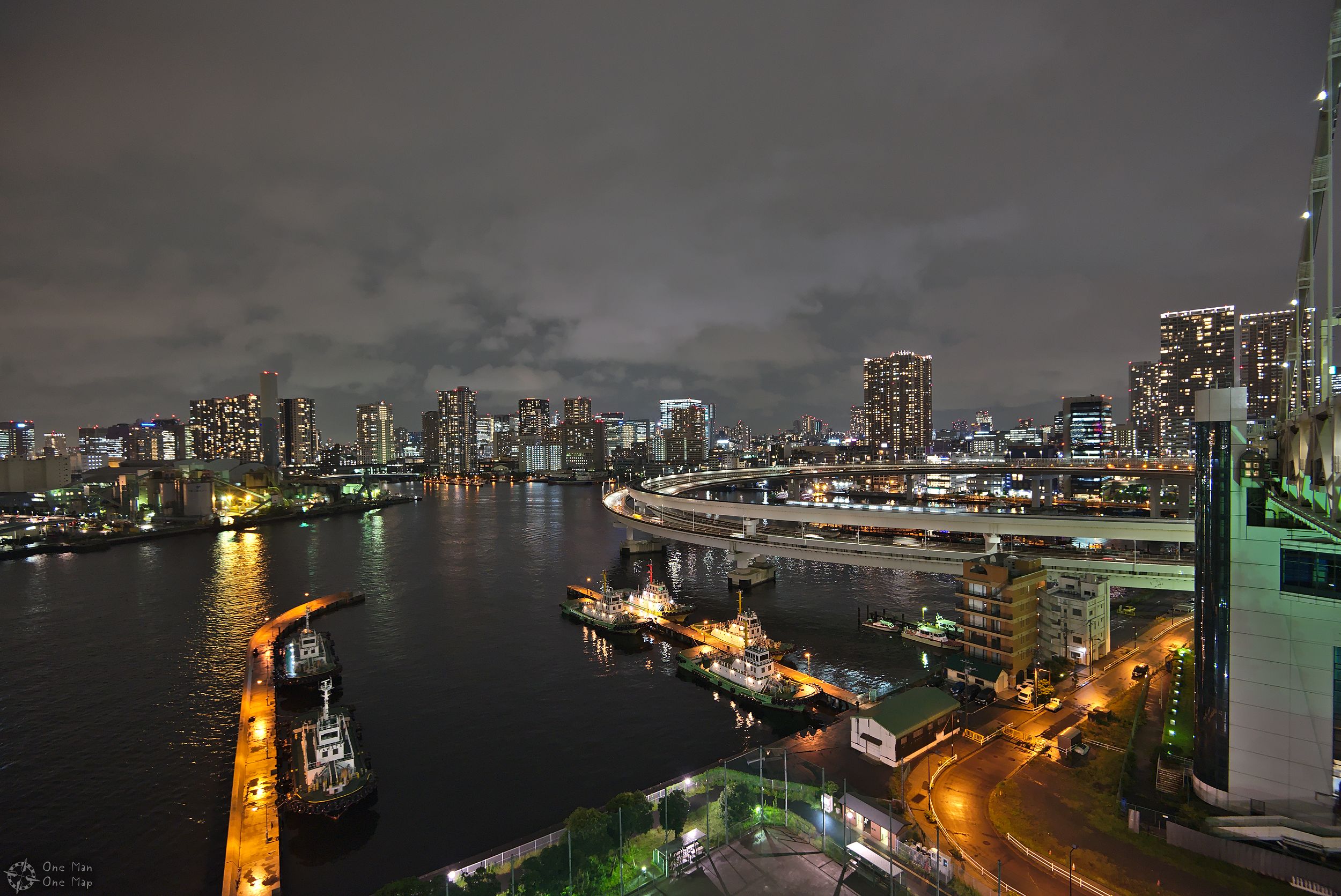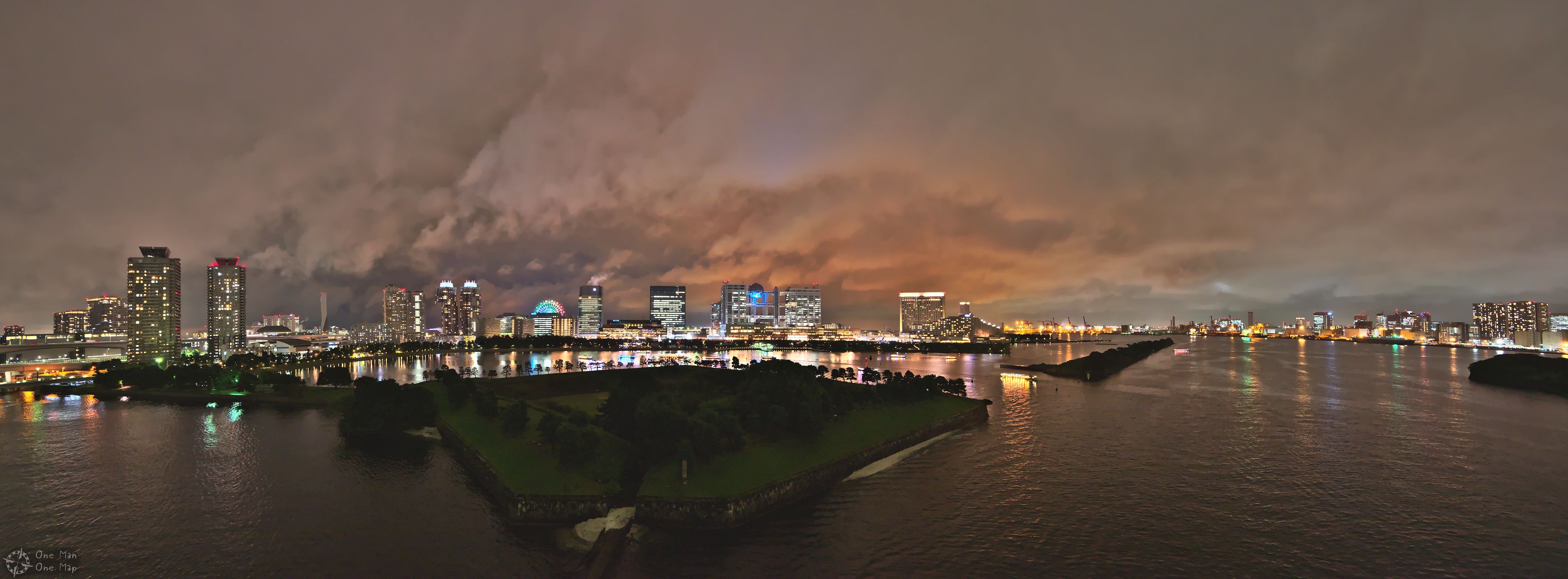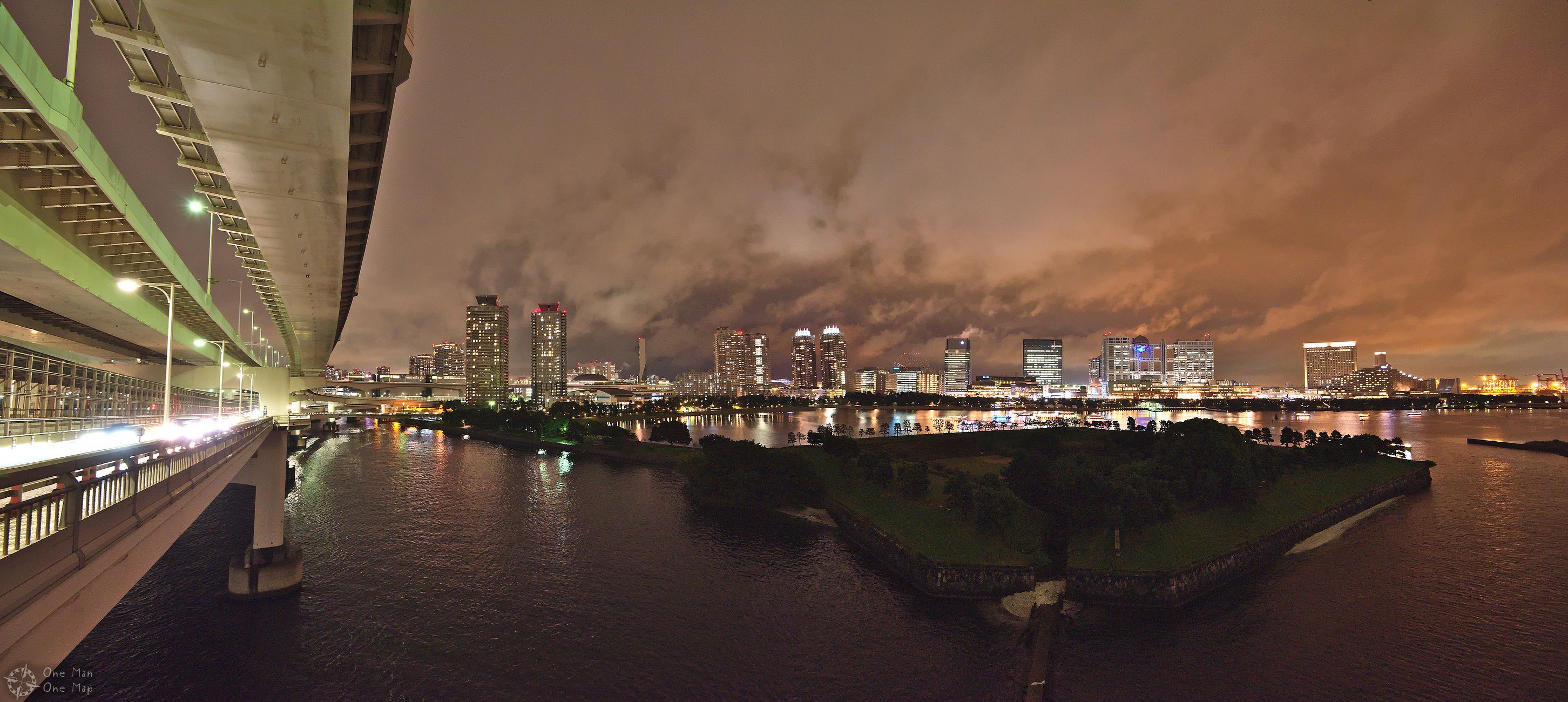Dieser Artikel ist auch auf Deutsch verfügbar. Click here to find out more about Japan!
My itinerary within Japan can be found here.
Tokyo – with 38 million inhabitants one of the largest metropolitan areas in the world. A city of this size does not only not fit into a single post, but it also looks and feels completely different during the day than at night. After I have already written about Tokyo by Day last week, today follows Tokyo at Night! In my opinion the pictures taken at night are even nicer… 🙂
Tokyo Metropolitan Government Building (東京都庁舎)
When the population of a whole country lives in just one city (Poland and Iraq have 38 million inhabitants too, Australia just 25 million …), a simple town hall doesn’t do the job anymore. Tokyo is self-governing and effectively has its own local government, which of course has to do what the central government says, but has more privileges than the other prefectures in Japan.
Two and a half years later, in December 1990, the 243 meters high, one-billion-dollar building was opened. It was designed by star architect Kenzō Tange, who for example also designed the Peace Center in Hiroshima, the Yoyogi National Gymnasium in Tokyo, the Expo ’70 site in Osaka and the Supreme Court of Pakistan. Kiyoshi Mutō, known as “father of the Japanese skyscraper” for hist contributions to earthquake engineering, was responsible for the engineering part. So they did everything as best as they could, and it’s visible. The building already looks breathtaking just form the ground, also because of the perfect lighting. I had to wait in the queue behind all the other photographers 😯
At the 45th floor of each of the towers there is a free viewing platform from which you can look over the city from a height of 202 meters. The platforms are open every day until 11 PM, but every day a different one is open.
Shinjuku (新宿区)
This district is known for its Golden Gai (新宿ゴールデン街, Golden Street), small streets full of small bars and music clubs, and the highest concentration of skyscrapers in Tokyo.
But mainly everything is about shopping, shopping, shopping again. The shops were open late at night.
Have you spotted Godzilla on the following picture yet? 😉
Suntory is not only Japan’s largest whiskey producer, but also makes a whole host of other drinks. The worst of them all is Boss Coffee – not because the coffee is so bad, on the contrary. You can get it everywhere, at any time, in different flavors, cold or warm, often for just 130 yen (about 1 euro) per glass bottle. The stuff is extremely addictive 😯
Also on sale around the clock: Mangas (漫画). Although I have not seen as many Manga-reading students on public transport as I would have expected, the very fact that every small supermarket had a shelf of it already says something. Supposedly more paper is used in Japan for the production of Mangas than for toilet paper, which is not really surprising. On one hand, the average Westerner can get by for quite a while with a single roll of toilet paper, so if you read a daily newspaper, that already requires more paper than you spend on toilet paper. On the other hand, Japanese toilets often use water instead of or in addition to toilet paper.
The average Mangaka (漫画家) is drawing Mangas every waking hour and allegedly has free time exactly once a week: for three hours on Saturday 😯
If you already have the feeling that the local kebab shop can make anything, you should have seen this restaurant …
Shibuya (渋谷区)
Speaking of food: by now I had worked my way to Shibuya and was really hungry. This district supposedly has the largest and busiest pedestrian crossing in the world. Up to 15,000 people per traffic light phase (!) cross it. Due to the bad weather I left the photos to the many other tourists, though…
Allegedly there are a million vending machines on the streets of Tokyo. Sometimes you don’t even know what’s inside, like with this one here. Put the coin in, put your hand into the hole, surprise;)
Sensō-ji Temple (浅草寺)
Tokyo’s oldest and most important temple is located in the Asakusa (浅草) district. The grounds include several gates, temples and the Nakamise-dōri (仲見世通り) street with stalls left and right. Neighbouring streets with historic buildings connect to it.
Let’s see what the future brings today. Take the drum and shake well, …
… pull the wooden stick out and read the symbol, …
… open the corresponding drawer, …
… and read the bad prophecy. Ouch, that doesn’t not look good 😯 There has to be something one can do about it!
Phew, thank god. The bad prophecy is tied to the wire and is thus (hopefully) neutralized. I didn’t have any problems during the rest of my stay, so it seems to have worked 🙂
Akihabara
Anyone interested in electronics, photography, computer games, Anime or Manga inevitably stumbles over Akihabara. Many people refer to it as a Mecca, but I was actually quite disappointed. The area is much smaller than usually depicted, and especially in comparison with Shinjuku the number of electronics and photography shops is very limited.
Instead over the years many Otaku and Maid cafes have moved in, which are special cafés for manga and anime fans in which one can be served in style by young girls (usually in the costume of a French maid) or boys (often in navy uniforms). The girls stand on the streets in their uniforms to advertise their employers and are a very popular photo subject, but you could already see in their faces that they didn’t really appreciate this kind of attention. It was exactly the same with the operators of many shops, who even threw tourists out once it became clear that they didn’t really want to buy anything. Overall not a really nice experience.
Roppongi Hills (六本木ヒルズ)
Six trees used to stand here (Roppongi literally means Six Trees), but three were felled and the other three fell victim to World War II. Today you would probaly have to rename the whole area Six Skyscrapers.
Already visible at the end of the street: Tokyo Tower.
Tokyo Tower (東京タワー)
This television and observation tower has been one of Tokyo’s landmarks since 1958. It doesn’t just look like the Eiffel Tower, but was modeled after it. Shiba Park (芝公園) with the Zōjō-ji temple is close-by.
Odaiba (お台場)
Hardly imaginable: The Japanese economy is doing so well at the time of the Expo ’85 in Tsukuba that the artificial island which has been piled up right in front of Tokyo in the sea is planned to turn into a kind of “center of futuristic living”. Just six years and ten billion dollars later the bubble had already burst, between 1991 and 1995 the whole island was virtually abandoned. The 800 meters long Rainbow Bridge (レインボーブリッジ), which spans the Bay of Tokyo between Shibaura (芝浦) and Odaiba, was almost pointless when it was finished in 1993.
Around the turn of the millennium the whole area was successfully remodeled into a leisure district and connected to public transport. Restaurants, shops, hotels and the Fuji TV Studios settled down. There are even sandy beaches where you can take a swim. I crossed the entire bridge on foot, which was not exactly easy. At Shibaura the access for pedestrians and cyclists is located in one of the piers, which stands on a small island far from the nearest train station. I walked the 1.4 kilometers from the Tamachi (町駅) subway station. At the Odaiba end you can leave the Rainbow Bridge over a smaller bridge and end up directly on Odaiba Beach.
One of the beaches has a replica of the Statue of Liberty. The French had only lent the Japanese a replica to celebrate the “French Year in Japan,” but the Japanese liked the statue so much that they simply made their own copy after they had to return the first one. The Rainbow Bridge in the background is somehow similar to Manhattan Bridge, so the view from here almost looks like you’re not in Tokyo anymore, but in New York …
The Daikanransha (大観覧車) ferris wheel next to Palette Town takes you to a height of 115 meters. Before the London Eye was opened, it was the tallest ferris wheel in the world for a short time, but by now it almost dwarfs compared to the current record holder, the High Roller in Las Vegas.
Lucky once again: The animated RX-0 Unicorn Gundam Mecha in front of the DiverCity Tokyo Plaza, from the manga and anime universe of the same name, was back!
Speaking of monsters: Have you ever seen a monster cat? No? Then you might be interested in the next post 😉
This post was written by Simon for One Man, One Map. The original can be found here. All rights reserved.

